Gukesh’s Journey: Lessons from Chess Legends to the Youngest World Title Contender
Nov 23rd, 2024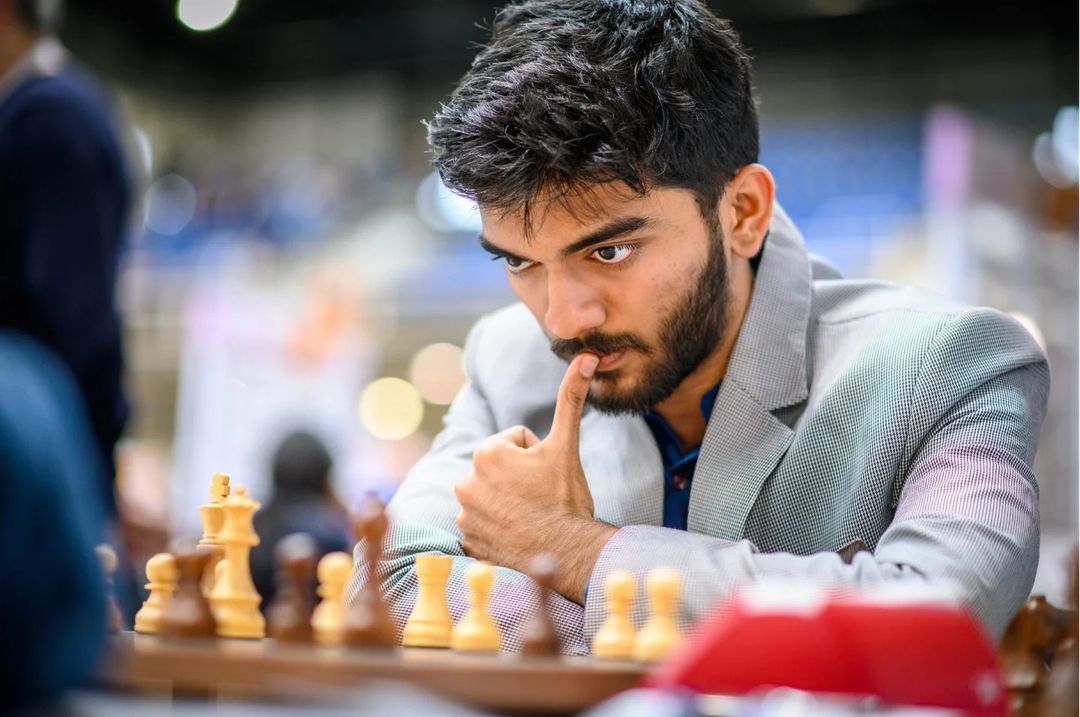
With a fearless tactical style, Gukesh Dommaraju has carved his place in chess history. Dive into the influences that shaped his game and discover how you can adopt the maneuvers and mindset of the youngest challenger for the chess crown.
At just 18, Gukesh has achieved what many grandmasters can only dream of:
- Surpassing the 2750 Elo mark in 2022
- Clinching double gold and scoring 9/10 at the 2024 Chess Olympiad
- Winning the 2024 Candidates Tournament to become the youngest contender for the title
Imagine the family chatter and comparisons during dinner conversations! Thankfully, we get to simply enjoy watching Gukesh in action.
Now, he’s set to face World Chess Champion Ding Liren in the biggest showdown of 2024.
As the world eagerly awaits, let’s revisit the inspirations that defined Gukesh’s play. Who knows—you might pick up tactics to sharpen your own game!
Let’s dive in.
Guided by the Legend: Viswanathan Anand
“It all started with Vishy Anand,” Gukesh shared in an NDTV interview, reflecting on India’s rise in professional chess.
Anand, India’s first Grandmaster (1998), is a five-time World Chess Champion and a two-time World Cup winner. Widely regarded as India’s greatest chess player, he inspires millions whenever he competes.
But Anand’s influence goes beyond inspiration. Through the Westbridge Anand Chess Academy (WACA), he mentored Gukesh and other rising Indian stars.
From January 2021 to November 2022, the program brought together renowned coaches like Artur Yusupov (two-time World Championship candidate) and Boris Gelfand (2012 World Championship challenger), aiming to catapult Indian talent into the top 10.
“What I want to see from this is to make sure some of them will break into the top 10,” Anand stated.
And Gukesh did just that!
Starting at 2563 Elo, Gukesh gained an astonishing 162 points, climbing to 2725 Elo and world #23. By September 2023, he entered the top 10, reaching world #8 and eventually achieving his highest rank yet—world #5.
Anand’s guidance has truly shaped a new era for Indian chess.
Influenced by the Legendary Garry Kasparov
When Garry Kasparov retired in 2005, Gukesh wasn’t even born. Yet, the 13th World Chess Champion’s impact on the young prodigy is undeniable.
In Gukesh’s home library, you’ll find annotated collections of classical games, including Kasparov’s masterpieces. Over the board, their styles share striking similarities—both are fearless attackers with a knack for breathtaking combinations.
Kasparov ruled the chess world for over 20 years, renowned for his unparalleled ability to hunt kings and calculate deep, intricate variations. His unmatched mastery of knight play, showcased in the 1985 and 1990 World Chess Championships, remains iconic.
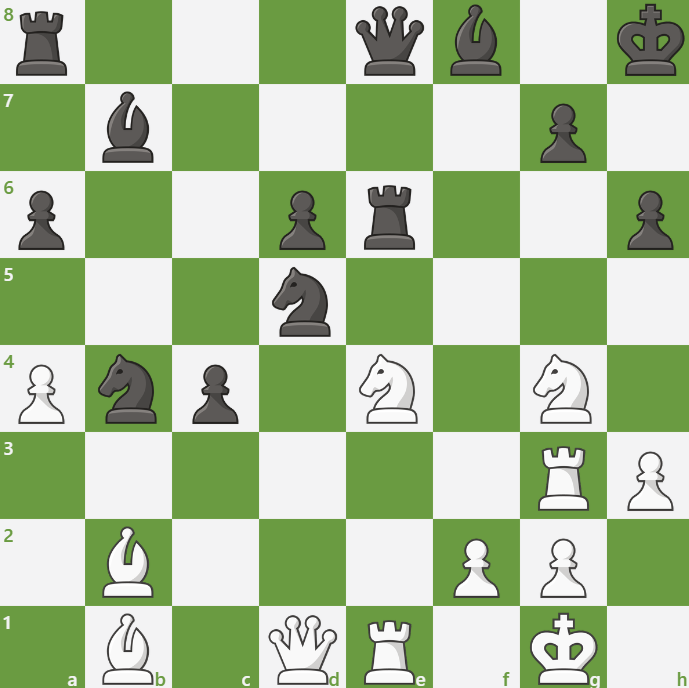
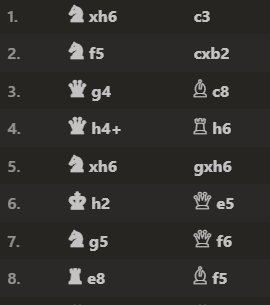
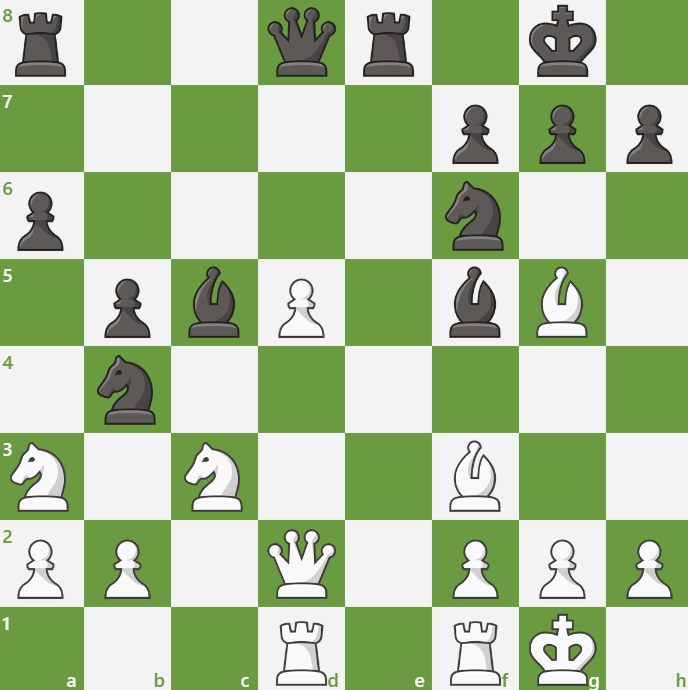
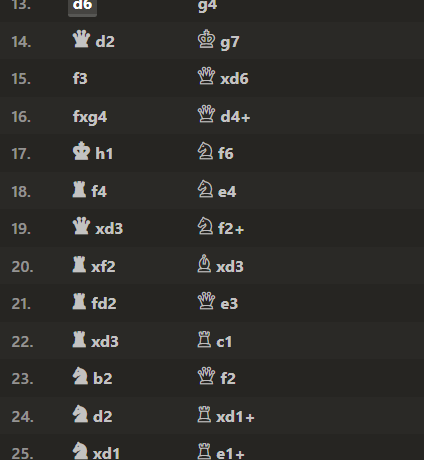
Gukesh seems to channel that same magic with his knights. ‘Active and aggressive’ perfectly describes their role in many of his games, where he often defies both commentators and engines with stunning precision.
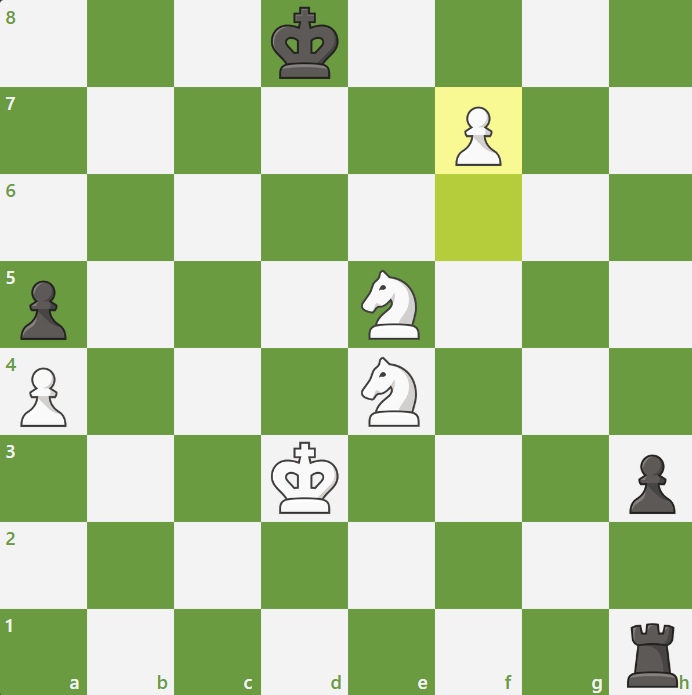
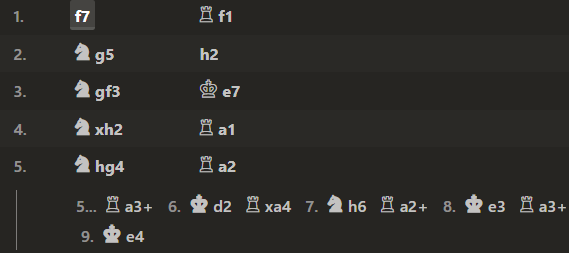
In one such moment, White attempts to drive Gukesh’s knight back to f6. But our champion had other plans. Can you spot his winning idea?
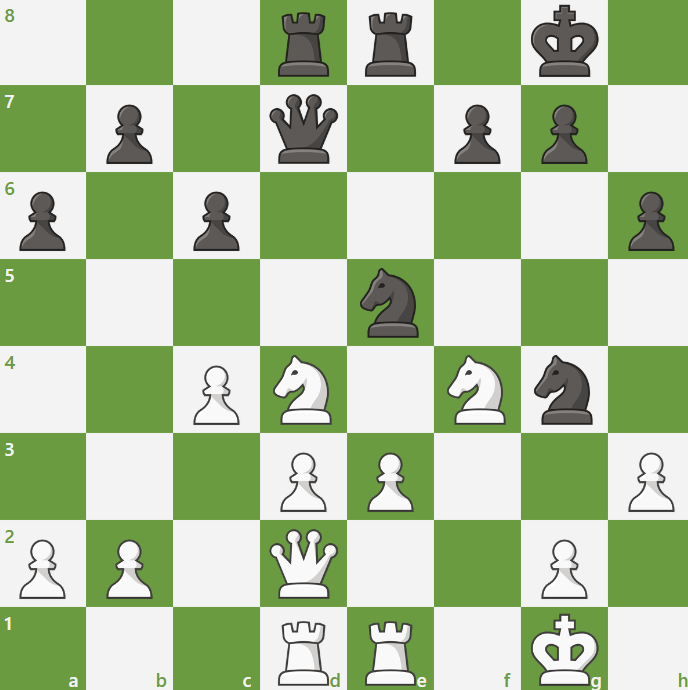

Mastering Restriction Like Magnus Carlsen
When it comes to the art of restriction and prophylaxis, no one rivals the precision of 16th World Champion Magnus Carlsen.
In his iconic “most accurate game in World Chess Championship history,” Carlsen systematically dismantled Black’s active ideas, leaving victory as a mere formality.
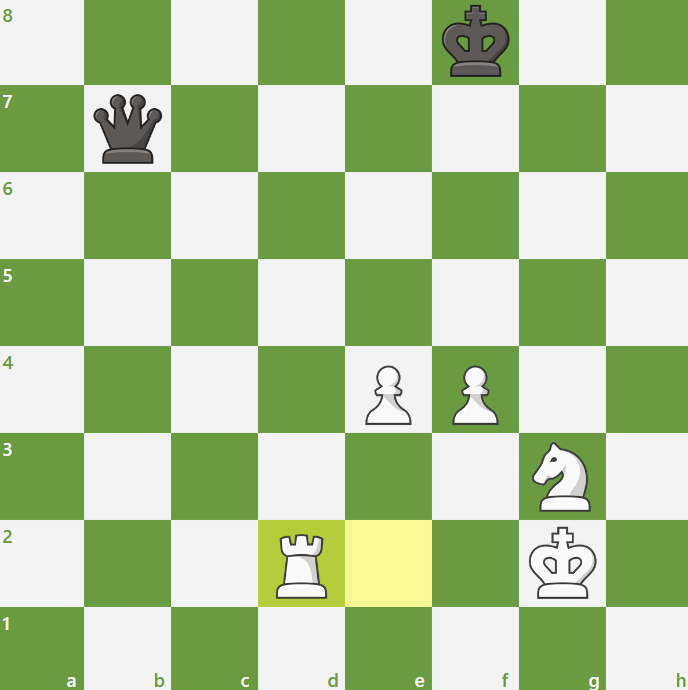
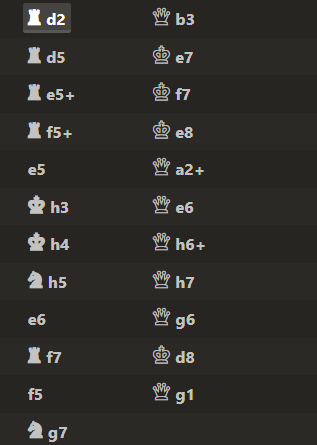
Stylistically, Carlsen and Gukesh couldn’t be more different. Carlsen thrives in positions of iron control, while Gukesh excels in chaotic, tactical battles.
Yet, under the guidance of his coach, GM Vishnu Prasanna, Gukesh studied Carlsen’s games closely—focusing on how Magnus predicts and neutralizes his opponent’s plans. This insight transformed Gukesh into an even deadlier attacker.
With his opponent’s counterplay stifled, Gukesh could unleash his offense freely, pressing his advantage at the perfect moment.
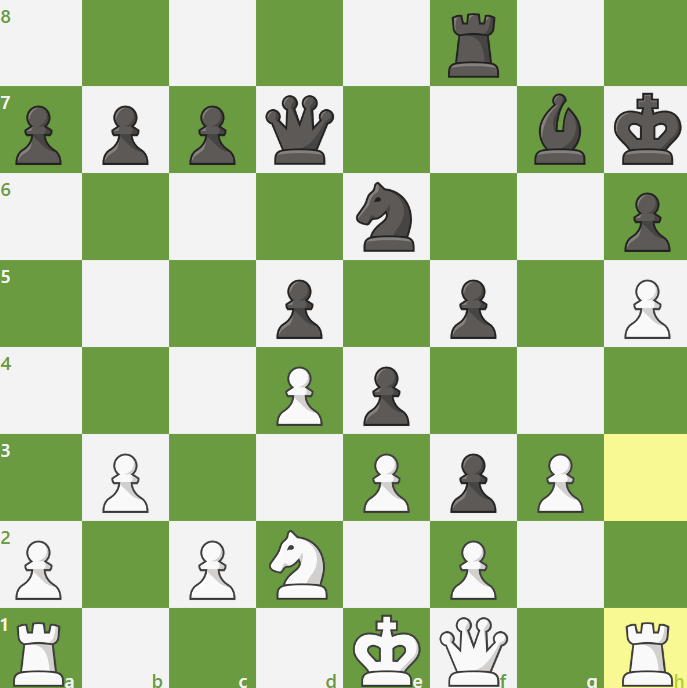
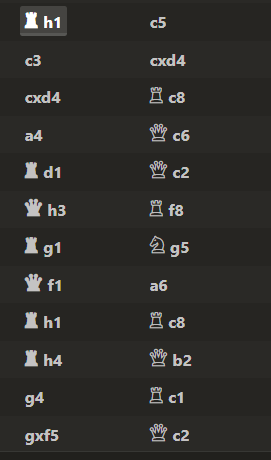
One of his signature tools for restriction? The pin. In this example, a single pin immobilizes four (!) of Black’s pieces, forcing a losing move. Can you spot the masterstroke?

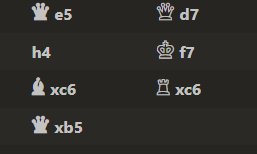
Conclusion
Over 325 years ago, Sir Isaac Newton famously remarked:

Gukesh Dommaraju’s rise to greatness mirrors this sentiment.
By absorbing the brilliance of Anand, the tactical mastery of Kasparov, and the positional dominance of Carlsen, Gukesh has crafted his own unique, high-pressure style that has captivated the chess world.
And the best part? You can learn to play like him.
Dive into Master Moves: Gukesh to explore 150 of his finest games and uncover the key elements that define his play.
From his dazzling knight maneuvers and relentless attacks to his queen-led assaults and signature pawn breaks—this guide dissects Gukesh’s gameplay so you can apply these strategies to your own.
Are you ready to embrace the “Guki-style” and take your game to the next level?
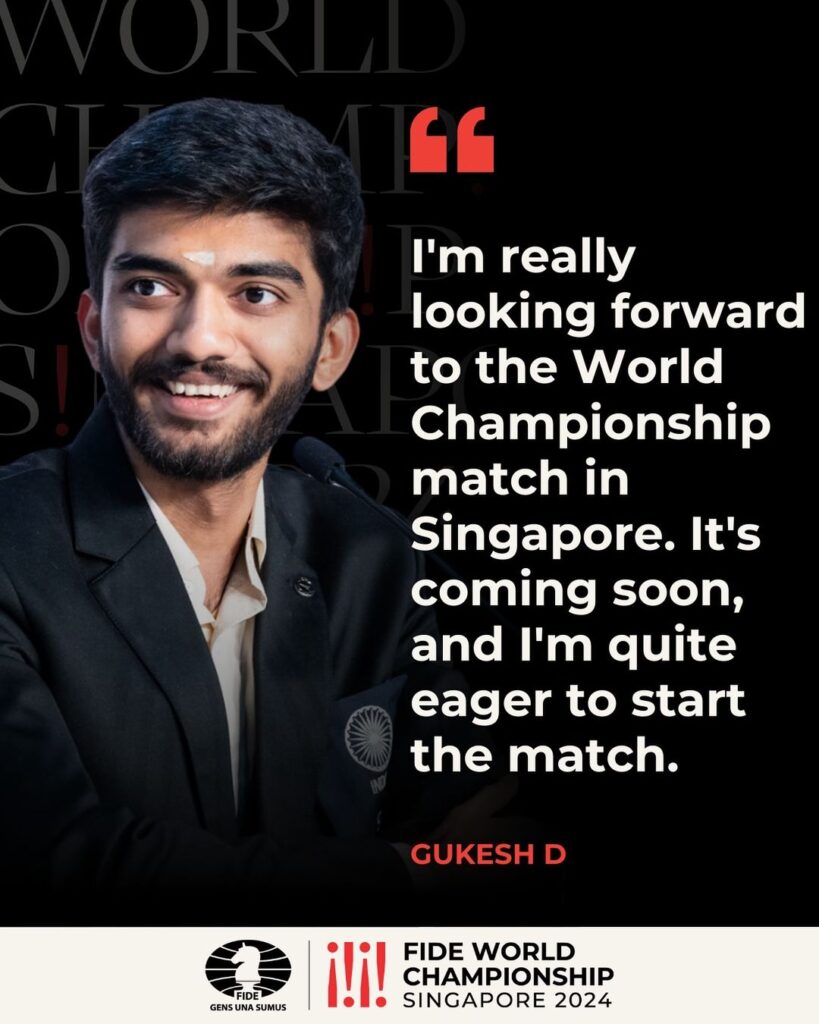
Chess Vampires: Unraveling the Mysteries of the Castle Strategy
Nov 12th, 2024
Can you crack this Halloween chess puzzle? 🎃
Hope you had a great Halloween! Here’s a tricky challenge for you: Figure out where the misplaced rook belongs. Is it on g1 or h1?
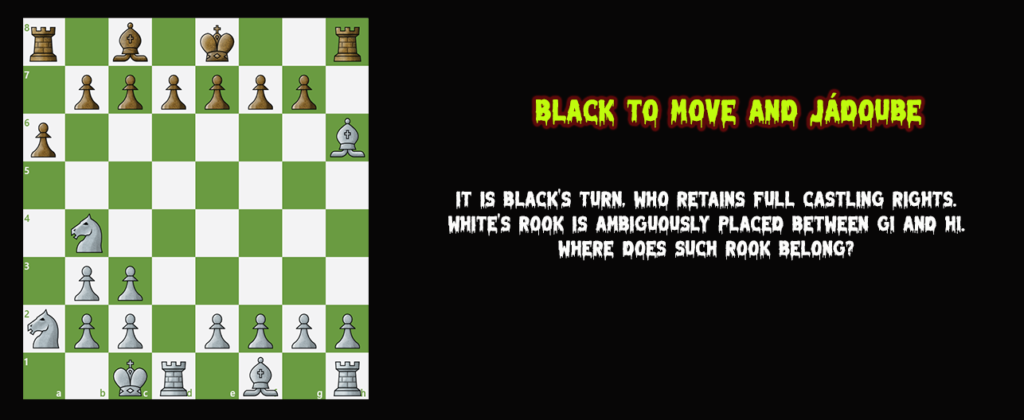
Only one of the two choices results in a legal chess position (one that could actually occur in a game).
Give it a shot!
Hint: Consider the last moves that might have been played.
So, what’s the connection to Halloween?
Solving this puzzle involves a clever parity argument, which leads us into the eerie world of chess composition: chess vampires.
A chess vampire is a legal position that has no legal mirror image. For more about how a position’s mirror image is defined and to explore these fascinating creatures, visit our first post on chess vampires.

The Vampire’s Castle
Last year, we stumbled upon vampires where en passant was possible. We even explored the woods and uncovered vampires with promoted pieces—rare creatures only found in the darkest hours before dawn. Yet, one mystery lingered.
Could the legend be real? Is there truly a castle of vampires? It’s rumored to lie hidden deep in the shadows, only emerging under the full moon’s glow. Stories of ghostly sightings have kept the legend alive for centuries. Some claim they’ve glimpsed its outline through the trees, while others believe it’s just a myth meant to ward off the curious. Despite many quests, no one had found it.
Today, reader, you have the chance to unveil it. The answer to the puzzle above reveals a castling vampire—a rare creature that survived a castling move. What a remarkable discovery!
Solution:
To solve this, let’s follow the hint and temporarily ignore the rook. We need to figure out the sequence of moves that led to the current puzzle position.
It’s Black’s turn, so White made the last move. While there seem to be several possible retractions for White, we need to determine what Black’s previous move was. If it was a7-a6, what came before that? We need a Black knight to reappear on the board so it can continue retracting.
Both of Black’s knights were captured on b3 and c3.
It would take 3 retractions from White to bring back a Black knight on b3. That’s too many… We also can’t retract dxc3 until the white bishop returns to c1. It seems we’ve hit a wall. But wait! We can gain an extra retraction by bringing a Black pawn back to h6 when retracting the bishop.
From this, we can deduce that the last 5 moves (plies) must have been as follows (still ignoring the rook):

Let’s wrap it up with our standard counting argument. Setting aside the rook for a moment, to arrive at the position just before the move dxc3:
White has made an odd number of moves (an even count of knight moves plus one pawn move, axb3).
Black has made an even number of moves (since squares b3 and c3 are of different colors).
However, in a position where it’s White’s turn to move, both players must have completed an equal number of moves. Thus, we need to adjust White’s move count, which is only possible by placing the rook on g1.
Final Thoughts
This composition answers the age-old question: can there be vampires in a game where castling has occurred? It’s incredible to discover that they do exist.
This revelation also affects how we classify these “vampires” into different “clans,” but that’s a story for another day.
We hope you found this post enjoyable! If you did, don’t forget to share it with your friends. Happy puzzling!
Chennai Grand Masters 2024: India’s Strongest Chess Tournament Returns
Nov 05th, 2024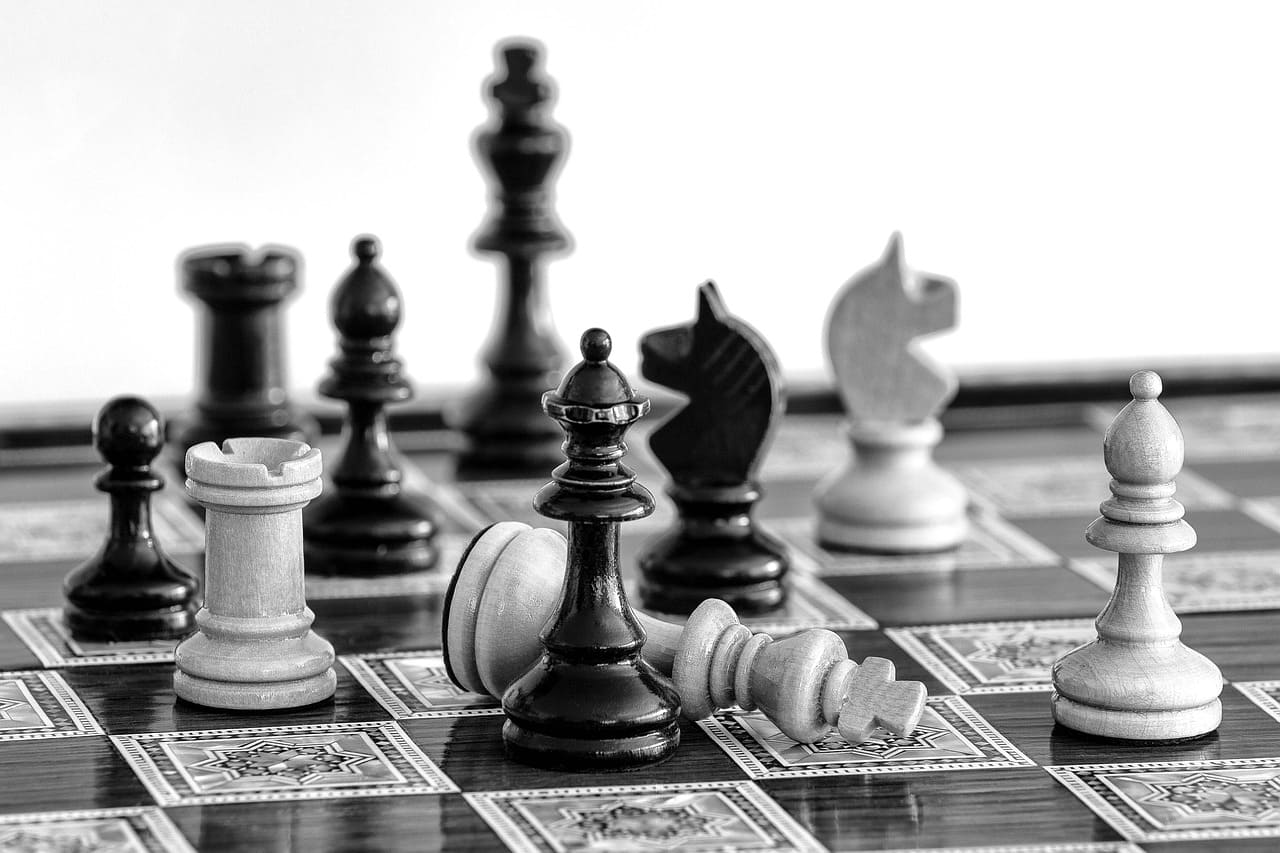
The Chennai Grand Masters continues to reign as India’s premier classical super tournament, boasting an impressive average rating of 2725 in the Masters section – a 14-point increase from its inaugural edition. The Challengers section follows closely with an average rating of 2594.
Masters Lineup:
- Arjun Erigaisi
- Levon Aronian (USA)
- Vidit Gujrathi
- Maxime Vachier-Lagrave (FRA)
- Parham Maghsoodloo (IRI)
- Aravindh Chithambaram
- M Amin Tabatabaei (IRI)
- Alexey Sarana (SRB)

Challengers Lineup:
- Raunak Sadhwani
- Abhimanyu Puranik
- Leon Luke Mendonca
- Karthikeyan Murali
- Pranav V
- Pranesh M
- Harika Dronavalli
- R Vaishali


Tournament Details:
- Sponsored by Tamil Nadu Government and Sports Development Authority of Tamil Nadu
- Total prize fund in Masters: ₹5,000,000 (≈US$ 60,000)
- Top three prizes: ₹1,500,000 (≈US$ 18,000), ₹1,000,000 (≈US$ 12,000), and ₹800,000 (≈US$ 9,600)
- Round 1 starts today at 3 p.m. IST
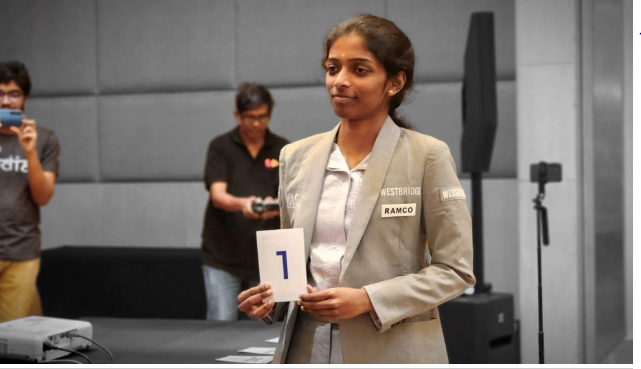
Challengers Section:
- Prize fund: ₹2,000,000
- Top three prizes: ₹600,000, ₹400,000, and ₹320,000
- Winner advances to Masters in the next edition
The Chennai Grand Masters 2024 is made possible thanks to the tireless efforts of key individuals, notably Atulya Mishra, Additional Chief Secretary of Tamil Nadu Government, and Meghanath Reddy, Member Secretary Sports Development Authority of Tamil Nadu. However, one person who has truly gone above and beyond is GM Srinath Narayanan.
Srinath’s parents always envisioned him becoming a world-class chess player, but he’s exceeded those expectations by creating multiple champions for India. As captain of India’s gold medal-winning team and trainer to the country’s top budding talents, Srinath has been instrumental in growing chess in India. Now, as organizer of the Chennai Grand Masters 2024, he’s brought the strongest classical tournament to Indian soil.
What’s truly inspiring about Srinath is his work ethic and humility. He lets his results speak for themselves, and his parents’ pride and happiness were palpable as they attended the opening ceremony. Srinath’s contributions to Indian chess are a testament to his dedication and passion.

Key Contributors to Chennai Grand Masters 2024:
- Atulya Mishra: Additional Chief Secretary of Tamil Nadu Government
- Meghanath Reddy: Member Secretary Sports Development Authority of Tamil Nadu
- GM Srinath Narayanan: Captain of India’s gold medal-winning team, trainer, and organizer of Chennai Grand Masters 2024
The Chennai Grand Masters 2024 promises to be an exciting event, featuring top players like Arjun Erigaisi, Levon Aronian, and Vidit Gujrathi. With Srinath at the helm, Indian chess is in good hands.

Magnus Debate Settled? 5 Reasons Carlsen Passed the Crown to This Legend
Oct 24th, 2024
Magnus Carlsen isn’t just the 16th World Chess Champion—he’s claimed the crown in all three formats: classical, rapid, and blitz, a remarkable 17 times!
With a peak FIDE rating of 2882, the highest ever recorded, and an unmatched 125-game unbeaten streak at the elite level, Carlsen also played the most accurate game in World Chess Championship history.
The records keep stacking up! So, when Carlsen received the FIDE 100 Best Player Award, it felt like a perfect fit—though Carlsen himself seemed the least surprised!
“I am, of course, happy to get this award. But in my personal opinion, I still think Garry Kasparov has had a better career than I have… I still think he was more deserving,” Carlsen declared.

The 13th World Champion, Garry Kasparov, remains a top contender for the “greatest of all time” title.
If you’re new to chess, you might recognize him from popular chess vloggers’ videos—where even top players like Hikaru Nakamura and Fabiano Caruana couldn’t defeat a “retired, rusty” Kasparov on his best days.
For seasoned fans, reliving Kasparov’s prime is a trip down memory lane!
Regardless of where you stand, here are 5 reasons why Kasparov is still the GOAT for many, including Carlsen!
- He Defended His Title 5 Times
As tennis legend Althea Gibson once said, “Winning it twice proves you are the best.” By that measure, Kasparov’s five successful title defenses stand unmatched.
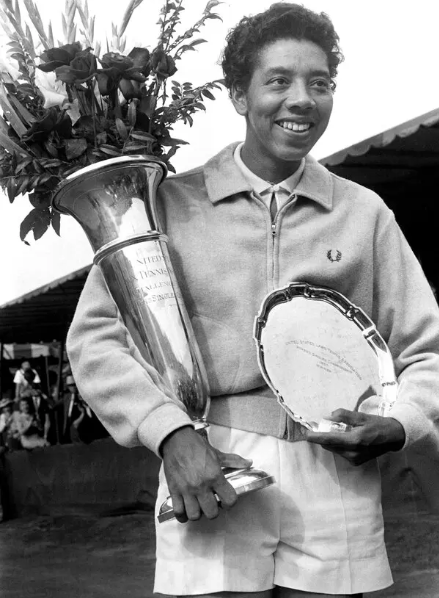
Though Emanuel Lasker also defended his title five times, Lasker’s era was often influenced by sponsorships, with challengers based on financial backing rather than merit. In contrast, Kasparov faced opponents who emerged from rigorous tournament cycles, ensuring they were the toughest competition of the time.
Kasparov’s defenses included four grueling matches against Anatoly Karpov, a dominant win over Nigel Short in 1993, and a decisive victory against Vishy Anand, securing his legendary status.
- The First-Ever 2800-Rated Grandmaster
The 2800-Elo mark is like an exclusive mansion where only the chess elite visit — and where Magnus Carlsen currently resides. But guess who built that mansion?
Kasparov was the first to shatter the 2800 barrier in January 1990 after dominating official tournaments, exhibition matches, and even TV appearances. He swept the Belgrade Investbank International with 8 wins and no losses, crushed the Tilburg Interpolis with 12 out of 14 points, and demolished a team of 6 French GMs and IMs in a simul. He even schooled David Letterman on live TV!
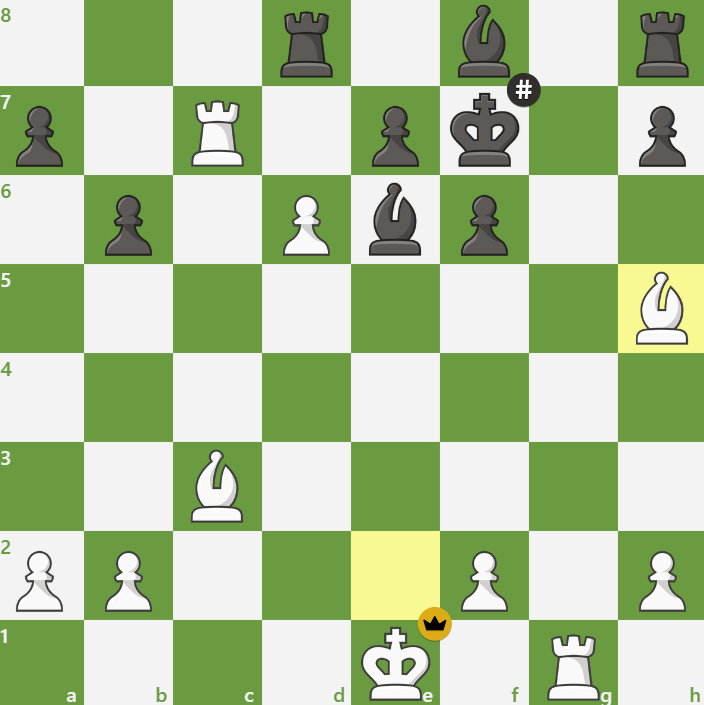
Though Kasparov briefly dipped below 2800 in 1992 and 1996, he quickly rebounded and never left the mansion again.
- He Ruled Over Two Chess Eras
Kasparov burst onto the chess scene in 1979, entering an elite tournament in Yugoslavia as an unrated player and finishing 1st, two points clear of the field. He quickly rose through the ranks, winning the World Youth Championship, the USSR Chess Championship, and dominating the 1982 Bugojno Super-tournament, before claiming the World Championship title.
In the pre-computer era, players relied on intense manual analysis, keeping track of endless variations in handwritten notebooks. Kasparov thrived in this hardcore environment, outworking his opponents and discovering fresh ideas.
Then, in the 1990s, Kasparov adapted to the rise of computers, facing new-generation GMs and powerful engines. Far from fading, he sharpened his skills, staying at the top even as chess entered the machine age. His successor, Vladimir Kramnik, summed it up best:

Kasparov was built for both worlds.
- He Pushed Boundaries Like No One Before
Most athletes, once at the top, shift to a defensive mindset—playing to avoid losing rather than playing to win. But Kasparov was different.
He relentlessly sought out new challenges, both in and outside of World Chess Championship matches. When super-GM tournaments weren’t enough, he took on entire national teams in clock simul games, dominating the Israeli and American teams.
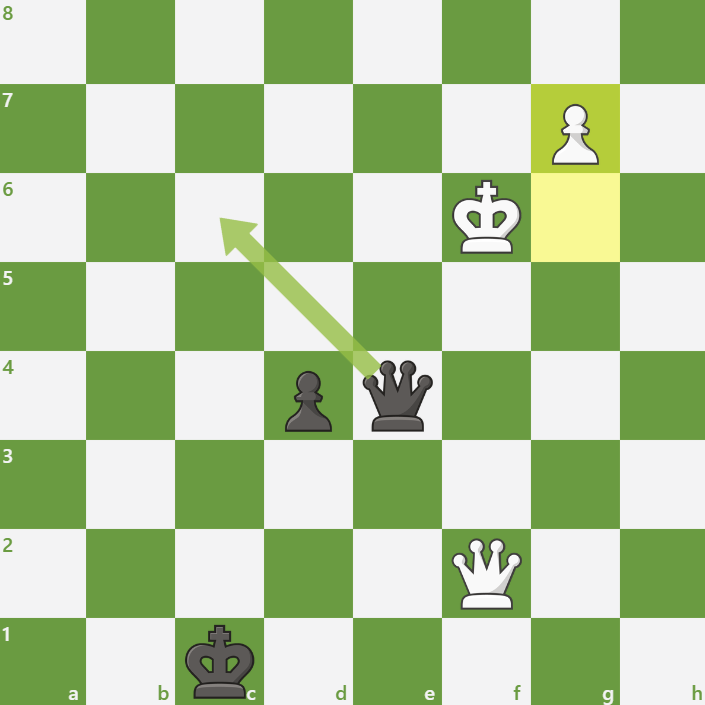
In 1999, he faced over 50,000 players from 75 countries in an Internet consultation game and still emerged victorious. He also famously beat IBM’s Deep Blue supercomputer in their first match. Even after losing the rematch to a more powerful version, Kasparov continued to take on and challenge the strongest chess engines of the time.
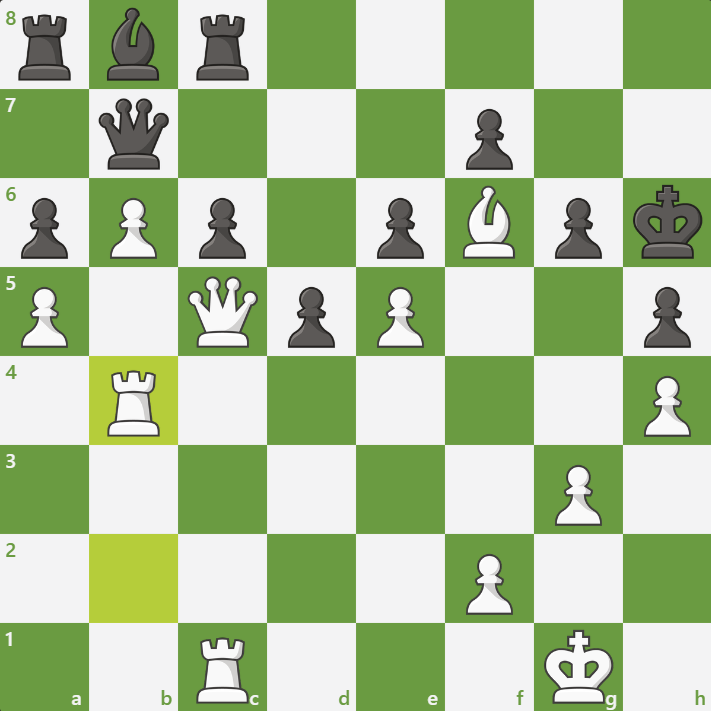
- He Kept Chess Alive on the World Stage Long Before the Boom
Before the 2020 chess boom, where streaming and online platforms made chess a global sensation, the game had few outlets for mass appeal. Social media, streaming, and platforms like Chess.com didn’t exist 20-30 years ago.
During this time, it was Kasparov who carried the mantle, representing chess on the world stage and attracting new fans. From appearing at Super Bowl XXXV to reenacting his Man vs. Machine triumph and giving countless interviews on the game’s value, Kasparov ensured chess stayed relevant and cool.
Wrapping Up
The GOAT debate in chess may never end, but Kasparov’s lasting influence on the game is undeniable. Whether you agree with Carlsen or not, we hope this journey through Kasparov’s legacy deepened your appreciation for chess legends and their timeless lessons.
Mastering the Légal Trap: A Historic Chess Tactic Explained
Oct 14th, 2024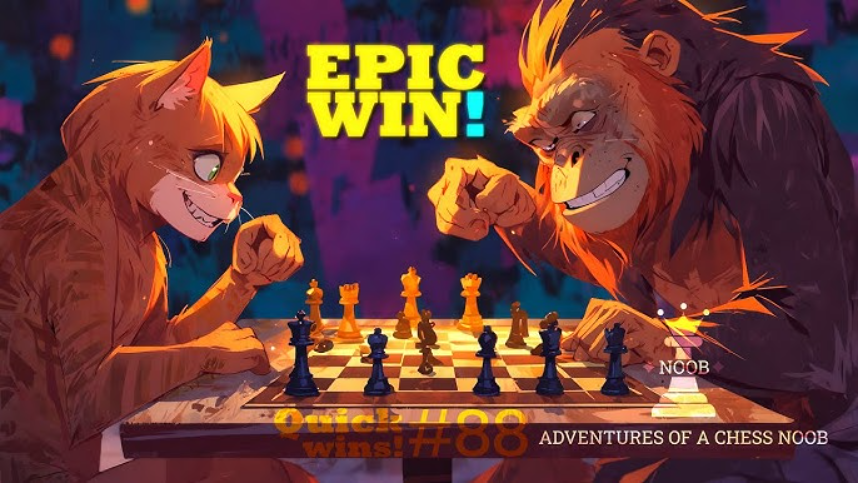
For Fast Victories #100, I’m pulling material from a chapter of the new book I’m currently writing. While it’s similar in spirit to “50+2 Chess Quick Wins,” this book takes a different approach in terms of structure and organization. It focuses on what I believe to be the best opening attacks and traps, viewed through the lens of Romantic Chess rather than strict evaluation accuracy (though many of these classic lines are still highly precise). Additionally, I’ll share the fascinating stories of the players who used these strategies.
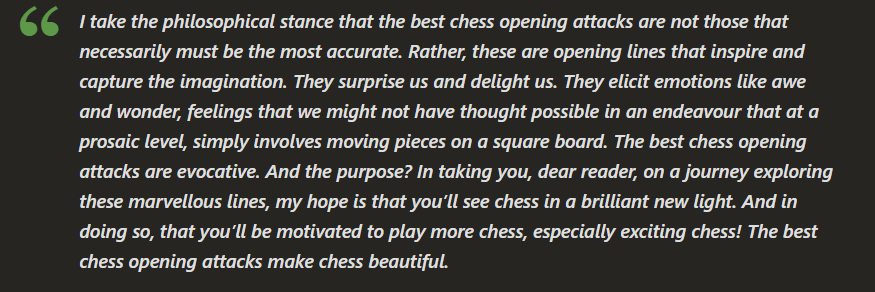
Today, we’ll explore one of the oldest and most elegant opening attacks from the Romantic Era of chess—the Légal Trap, also known as the Légal Mate or Légal Pseudo-Sacrifice. In this stunning tactic, two knights and a bishop work together to create a seemingly impossible checkmate.
The trap is named after François Antoine de Légal de Kermeur (1702-1792), a French chess master regarded as the best player in the world until 1755, when he was famously defeated by his pupil, Philidor. Both de Légal and Philidor dominated at the renowned Café de la Régence in Paris, a key chess hub during the 18th and 19th centuries. The rise of coffeehouses in Paris during this time also gave birth to the timeless tradition of playing chess while enjoying a good cup of coffee!

Before diving into what de Légal played in 1750, let’s first take a look at an instructive example from a later game: Chéron vs. Janloz (1929). This game, played by IM Andre Chéron (1895-1980), a three-time French chess champion (1926, ’27, and ’29), occurred during a simultaneous exhibition in Switzerland.
The Indicative Légal Trap from the Italian Game: Chéron — Janloz, 1929
- e4 e5 2. Nf3 Nc6 3. Bc4 d6 4. Nc3 Bg4 5. h3 Bh5? 6. Nxe5!! Bxd1?? 7. Bxf7+ Ke7 8. Nd5# 1-0
In this game, Chéron starts with the Italian Game, while Janloz plays the somewhat passive (3… d6), known as the Paris Defense. This move blocks in Black’s light-squared bishop and hinders development. After Black’s bold attempt at pinning the knight with (4… Bg4), White responds with (5. h3), forcing Black to either exchange or retreat. When Black mistakenly retreats with (5… Bh5?), White springs the Légal Trap with (6. Nxe5!!), sacrificing the queen. Black captures it (6… Bxd1??), falling right into a stunning checkmate with (7. Bxf7+) followed by (8. Nd5#).
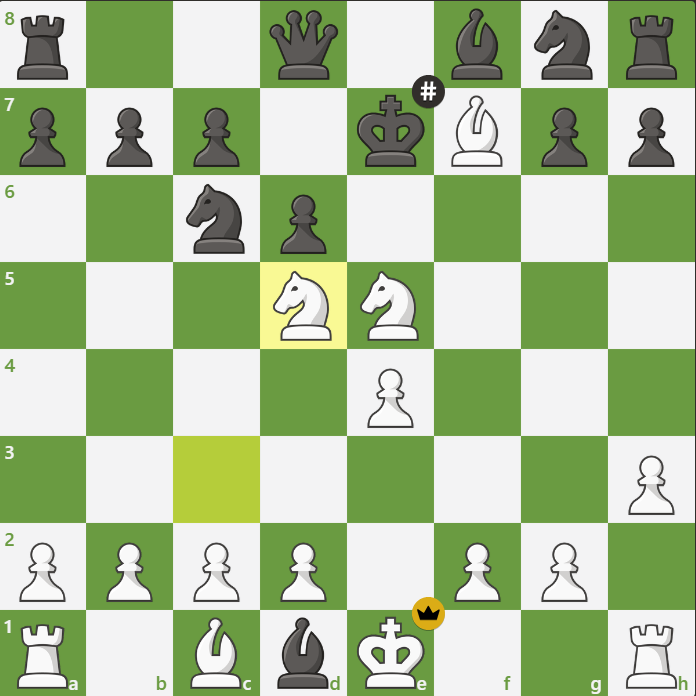
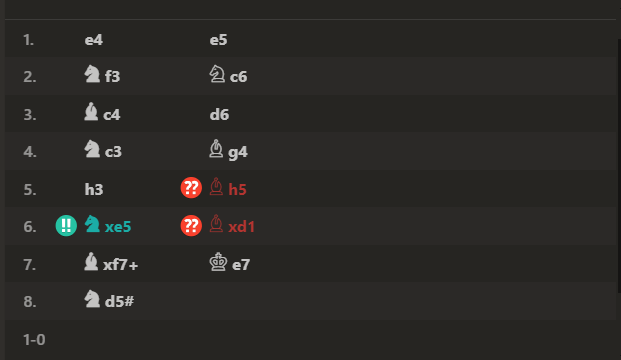
Even if Black had tried to capture the knight with (6… Nxe5), White would have stayed ahead by exploiting a fork with (8. Qb5+), ensuring material advantage and a strong position.

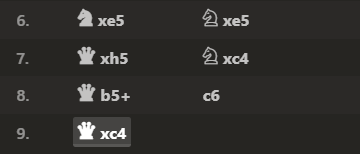
Légal Trap from the Max Lange, Vienna Gambit: Pillsbury — Fernandez, 1900
- e4 e5 2. Nc3 Nc6 3. f4 d6 4. Nf3 a6 5. Bc4 Bg4 6. fxe5!! Nxe5?? 7. Nxe5!! Bxd1?? 8. Bxf7+ Ke7 9. Nd5# 1-0
The Légal Trap can arise from several openings, as demonstrated by this double-brilliancy game from Harry Nelson Pillsbury (1872-1906), a US chess champion known for his remarkable talent. Pillsbury, who learned chess in his teens, quickly rose to fame, winning the US championship at 25, a title he held until his death.
In this game, Pillsbury played the Vienna Gambit within the Max Lange Defense. After (5… Bg4) pinning White’s knight, Pillsbury responded with the first brilliancy (6. fxe5!!), followed by the stunning queen sacrifice (7. Nxe5!!). Black fell for the trap, taking the poisoned queen, leading to a beautiful checkmate. Classic “oh no, my queen!” moment. 😚🤌
Sadly, Pillsbury’s career was cut short, possibly due to syphilis, which affected him during the 1895-96 St. Petersburg tournament. Had he continued his upward trajectory, he may have contended for the world championship.
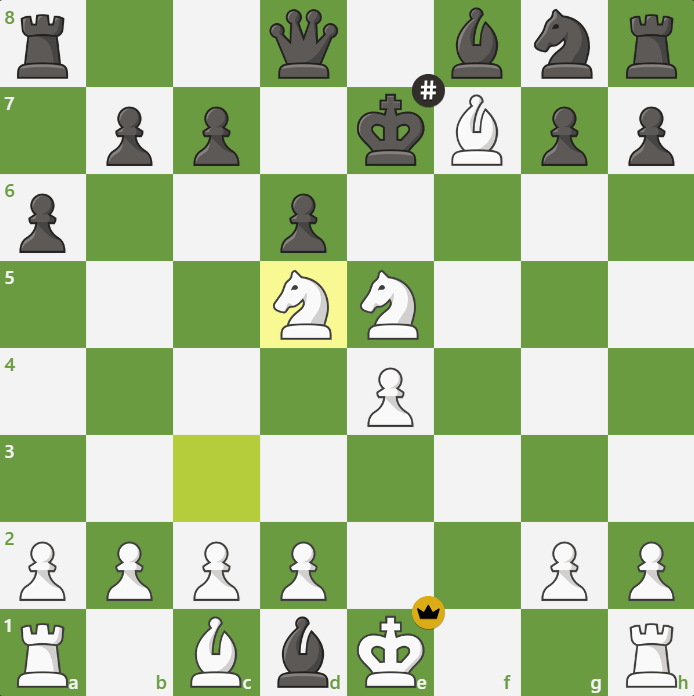

The Ultimate Flex: OG Légal Trap | de Légal — Saint Brie, 1750
Handicap: a1-rook removed (rook odds)
- e4 e5 2. Bc4 d6 3. Nf3 Nc6 4. Nc3 Bg4 5. Nxe5!? Bxd1?? 6. Bxf7+ Ke7 7. Nd5# 1-0
In this iconic game, the legendary de Légal gave rook odds to his opponent, because why not? Kicking things off with the Bishop’s Opening, de Légal set the trap, and Saint Brie fell for it with (5… Bxd1??), leading to a swift checkmate!
This game was played at Café de la Régence, where de Légal mentored his soon-to-be star pupil, Philidor, the future world champion. Interestingly, Philidor’s name became synonymous with (2… d6), the opening used in this game, known as Philidor’s Defense. While Philidor was famous for his prowess on the chessboard, he’s also remembered as a celebrated opera composer, proving his genius knew no bounds.
Philidor’s early life was filled with fascinating adventures, from surviving a failed concert tour to earning his living through chess in the coffeehouses of Europe. After returning to Paris in 1754, he defeated his old master de Légal and was considered the strongest chess player in the world for many years. But chess wasn’t his only calling—he eventually returned to composing music, where he found great success.
In this game, the position transitioned back into the Italian Game. By the end of turn 3, it mirrors the setup from (Chéron — Janloz, 1929), with the only difference being the missing rook. But on move 5, de Légal showed why he’s the original master of the trap! For his signature Légal Trap to work, (5. h3 Bh5) would normally be required, so the structure wouldn’t collapse if Black declined the “free” queen by playing (6… Nxe5).
But de Légal had no time for subtlety! He pulled a crafty psychological trick, “accidentally” touching his f3-knight before retracting his hand. Saint Brie, being a stickler for the touch-move rule, called him out. Playing along, de Légal “reluctantly” (😏) made the move (5. Nxe5!?)—and Saint Brie predictably snatched up the poisoned queen! Chef’s kiss. 😚🤌
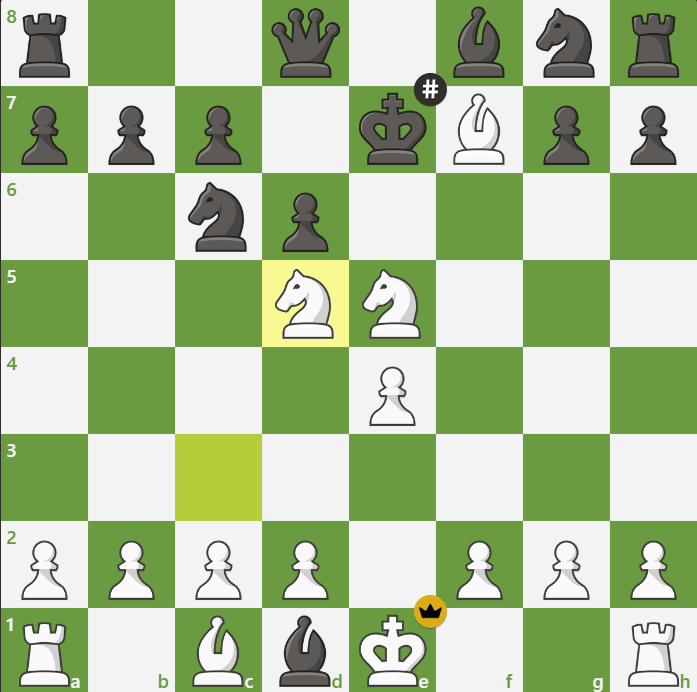

In this brilliant display, de Légal, the strongest player of his time, gave rook odds, then bluffed his way into a win a turn earlier than expected. It’s a masterclass in psychological chess and an unforgettable Quick Win! Let’s honor the spirit of romanticism in chess today—sometimes, it’s okay to play like de Légal! 🤩👍
Life Lessons from Chess: Strategy, Discipline, and Adapting to Change
Sep 26th, 2024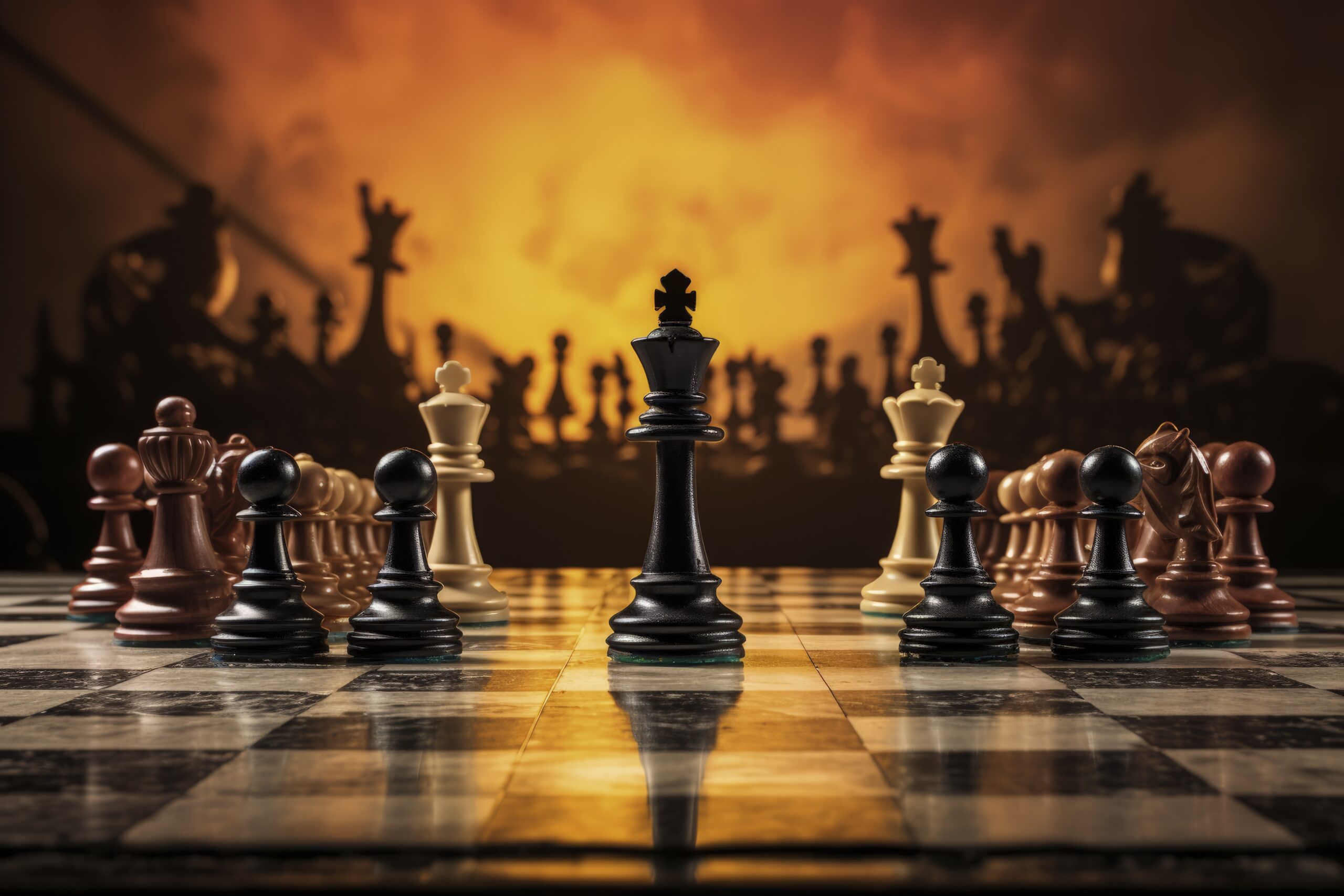
You’ve likely encountered a similar phrase before, perhaps in the context of art. Personally, I see chess as more than just a game—it’s a form of art in its own right. This led me to wonder: does chess mirror life as well? What parallels can we draw between the game and the daily battles we face? Could a chessboard’s 64 squares act as a microcosm, simulating the same struggles we encounter in real life?
Finding the answers isn’t easy, so I resorted to my go-to method for complex questions: writing about it. In doing so, I hope to share my thought process and conclusions with you.
Without creating too much suspense, I believe chess and life share many similarities. After countless revisions, I’ve managed to organize my thoughts, and I’m excited to present them to you. I hope you enjoy the journey we’re about to embark on.
This might be the most abstract blog I’ve written so far, and I’m still finding my way in this realm, so I appreciate your patience. If you’re familiar with my writing, you’ll know I like to break my ideas into clear topics before delving into each. So, let’s begin.
1. We’re in Control—In Chess and in Life

In chess, every move, every plan, and every risk we take is entirely our decision. We’re alone with our thoughts and responsible for the outcome. The same applies to life—although we have the support of family and friends, ultimately, our lives are in our hands.
Life can sometimes feel like a solo chess game on “hard mode,” where we alone shape our destiny. While loved ones can guide and support us, they cannot take control of our lives. Much like in chess, when no one else is there to help, we rely on our own intellect and resolve to move forward.
2. Decisions and Their Consequences

In both life and chess, decisions have ripple effects. A tactical move in chess mirrors the everyday choices we make—what to eat, which activities to prioritize. Medium-term choices, like planning a vacation, are akin to positioning a knight or developing rooks. But the most critical decisions are long-term strategies: what career path to follow, where to invest time and resources.
Just like in chess, we must juggle short-term tactics with long-term plans. A brilliant strategy can crumble with one careless tactical mistake, and a single poor decision in life can undo months of planning.
3. Discipline and Emotional Control
Staying calm under pressure is crucial in chess and in life. For amateurs, losing a chess game might not seem like a big deal, but for professionals, emotional stability can outweigh technical skill. Magnus Carlsen, for instance, often triumphs due to his ability to remain composed under immense pressure.
In life, emotional discipline matters just as much. Whether it’s during a critical business meeting or a challenging personal situation, keeping our cool can be the key to success. Chess, in many ways, serves as a practice ground for mastering this vital life skill.
4. Adaptability

No matter how well we plan, surprises arise in both chess and life. An unexpected move by an opponent can force us to change our strategy, just as life throws curveballs that challenge our carefully laid plans.
Ignoring reality and sticking rigidly to an outdated plan often leads to failure. The ability to adapt and reassess is essential, whether in pursuit of victory on the chessboard or in overcoming challenges in life.
5. Time Management

In fast-paced chess formats like blitz or bullet, time management is critical. Likewise, managing our time in life is one of the most difficult yet important skills to master. Procrastination or perfectionism can cost us opportunities, just like time mismanagement in chess can lead to poor moves made in a rush.
6. The Drive to Improve

Both in life and in chess, we strive to better ourselves. Whether it’s seeking a higher ELO rating in chess or advancing in our careers, self-improvement drives us forward. However, it’s important not to let this desire become an unhealthy obsession. Enjoyment should always be part of the process—both on the chessboard and in life.
7. Ethics and Integrity

Chess has a long tradition of respect for the rules and for one’s opponents. Similarly, living with integrity is essential in life. Winning at all costs may offer temporary success, but earning respect through honesty and ethics is far more valuable.
8. Mistakes Are Costly and Remembered
In chess, a single blunder can overshadow an otherwise brilliant game. The same is true in life—our mistakes are often remembered longer than our successes. But instead of dwelling on these setbacks, we should view them as learning opportunities.
9. The Journey Is More Important Than the Destination

Many chess players believe that the true joy comes from winning. However, I think the process—learning, growing, and playing—is far more meaningful than the result. The same applies to life: enjoying the journey is what brings true fulfillment, not just achieving goals.
10. There’s Always a Chance to Start Over
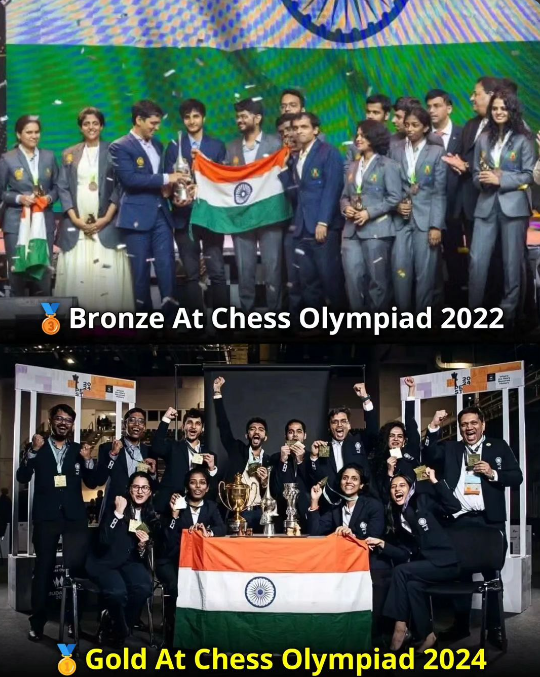
In chess, every loss is a learning opportunity, and every new game offers a fresh start. Life is no different. Setbacks are not the end, but rather stepping stones to growth. With every failure, we can learn, adapt, and try again.
Conclusion
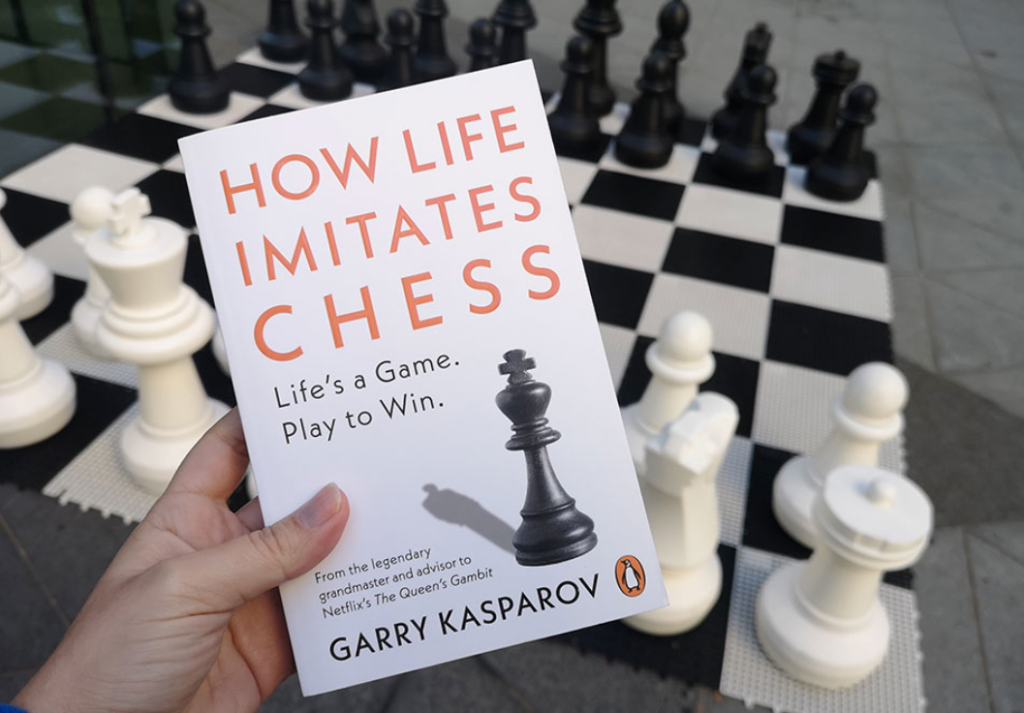
Chess and life are intricately connected. Writing this blog has deepened my understanding of this beautiful game and its similarities to the challenges we face every day. I hope this reflection has given you a new perspective on both chess and life.
Do you agree? Are there any other parallels between chess and life that I’ve missed? I’d love to hear your thoughts! Thank you for reading, and I hope this has inspired you to approach both chess and life with a fresh mindset.
How Chess Altered the Course of History: The Butterfly Effect Unveiled
Sep 12th, 2024
Dear readers,
Many of you might already be acquainted with the concept known as the “Butterfly Effect,” a key idea in Chaos Theory. For those who aren’t familiar, I will provide a brief explanation to ensure the following discussion on chess-related topics is clear and meaningful.
The term “Butterfly Effect” is credited to the work of mathematician and meteorologist Edward Norton Lorenz, with significant insights from physicist Henri Poincaré and philosopher Norbert Wiener. Lorenz observed that his weather model produced vastly different outcomes when even a tiny alteration was made to the initial data. A small change in the starting conditions always led to dramatically different results.
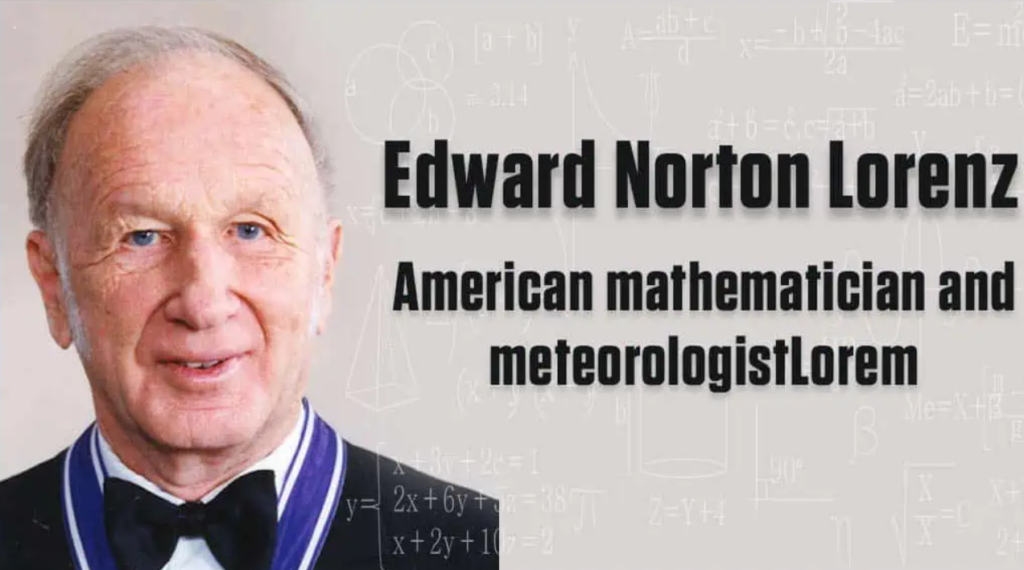
Edward Norton Lorenz is known for developing the “Butterfly Effect” concept.
He illustrated this concept with an example, explaining that the formation and path of a tornado could be influenced by seemingly insignificant factors—like a butterfly flapping its wings weeks earlier and thousands of miles away. This is why it’s called the “Butterfly Effect.”
Essentially, this idea underscores how the present is extremely sensitive to initial conditions from the past—where a minor variation in one event can have far-reaching consequences later on. This concept has been explored in various cultural works, with the 2004 film “The Butterfly Effect,” starring Ashton Kutcher and Amy Smart, being among the most well-known.
Directed by Eric Bress, this film has become a defining work on the topic.
It presents the notion that, if time travel were possible, even the smallest actions could create chaos in the universe. Imagine you traveled back in time to visit a serene German town, far removed from the hustle and bustle of modern life. While there, you engage in a brief, casual conversation with a woman in a park. A man, assuming you two are together, passes by without a second glance.
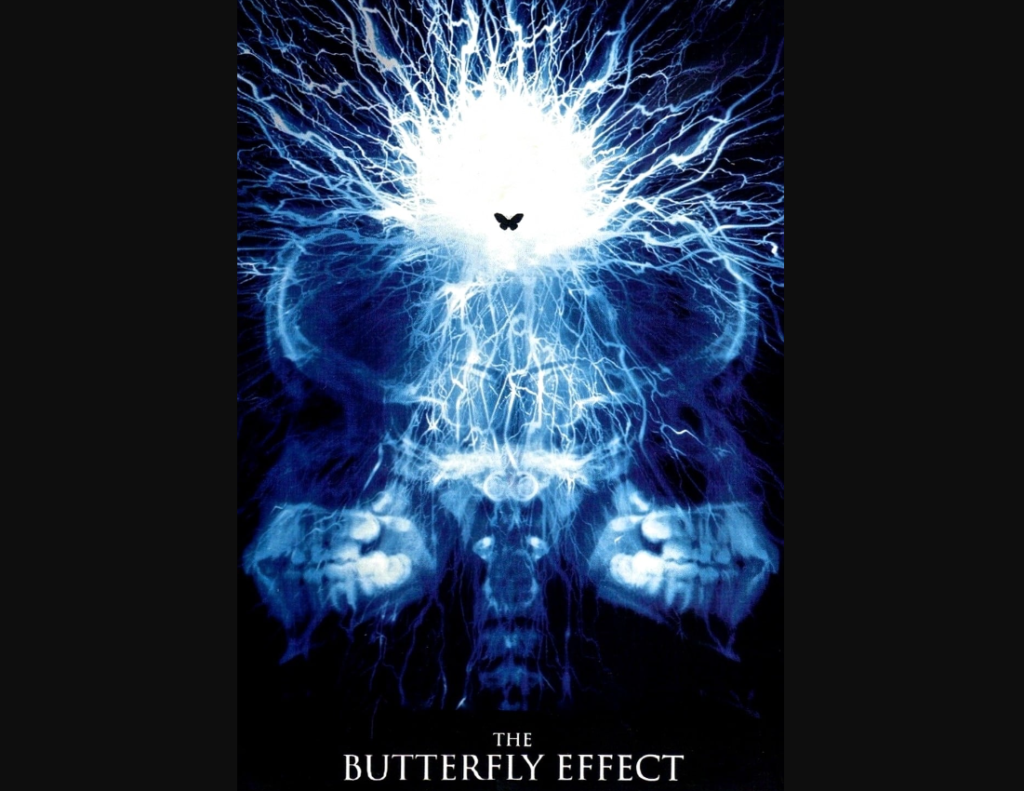
It seems like a trivial interaction, right? But what if I told you that this woman and the man who walked by were destined to be Albert Einstein’s parents? Because of your short conversation, they never meet, and history is altered forever.
With this explanation in mind, let’s explore how chess has played a role in shaping our world’s history. We’ll also imagine how different the world might be if certain key moments involving chess had unfolded differently.
CHRISTOPHER COLUMBUS: THE BIRTH OF ‘INCALAND’
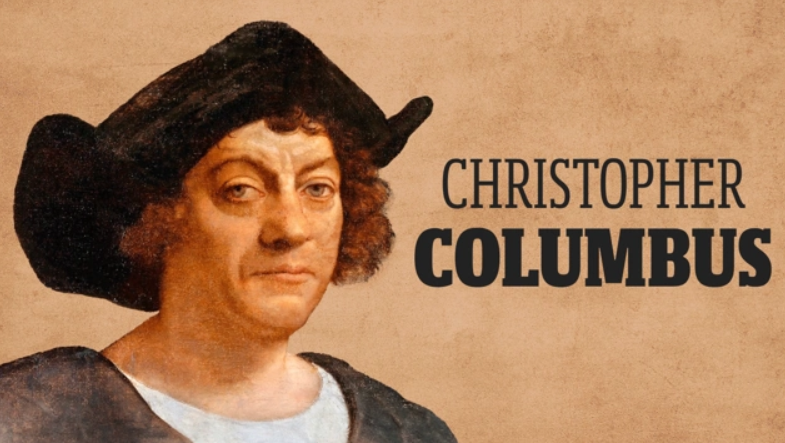
Christopher Columbus is often credited with the discovery of America under the Spanish crown. Born on August 25, 1451, Columbus was an Italian navigator from the Republic of Genoa who embarked on four voyages across the Atlantic Ocean, establishing the first known European contact with South America. However, what many may not realize is that chess played a pivotal role in Columbus securing the approval to embark on his legendary journey.
Just like modern businesses seek investors, Columbus faced significant challenges in finding sponsors for his ambitious plan. His goal was to establish a new route to Asia by sailing west across the Atlantic, thereby avoiding the Ottoman-controlled route through Constantinople.
Initially, Columbus presented his plan to King John II of Portugal, a leader of the maritime world at the time. However, the king rejected the proposal, opting instead to explore a route to India around the African continent.
Following this setback, Columbus relocated to the Kingdom of Aragon and Castile (modern-day Spain) around 1485. After pitching his idea to King Ferdinand II of Aragon, the proposal was once again rejected. Yet, with Queen Isabella of Castile’s support and belief in the project, Columbus persisted, waiting for the right moment to bring the proposal back to life.
Queen Isabella I of Castile, also known as Isabel la Católica, was instrumental in aiding Columbus with his venture.
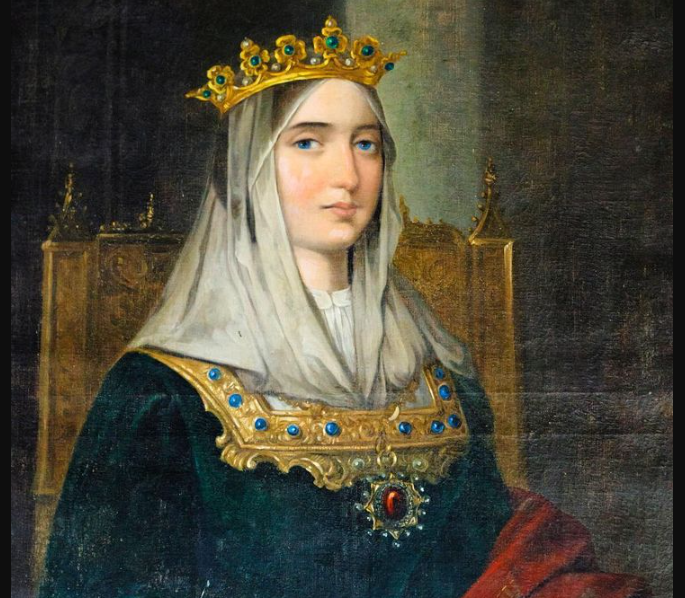
This is where chess enters the story. According to Hernando del Pulgar, King Ferdinand’s secretary, the king was an avid chess player, frequently competing against his “regular opponents,” including the royal chaplain Juan Rodríguez de Fonseca.
One afternoon, as Ferdinand engaged in a chess match, he was asked if a decision had been made on Columbus’ proposal. Irritated, he postponed the answer until after the game. At the time, Ferdinand’s position on the board seemed dire, and Isabella recognized that the moment wasn’t ideal. She waited patiently, hoping for a shift in fortune.
That moment came unexpectedly. Just when the king was on the verge of conceding, Queen Isabella noticed a winning strategy. She quietly approached Ferdinand and pointed out that he had a checkmate in five moves. Energized by her insight, Ferdinand began to analyze the position and soon executed the correct moves.
King Ferdinand II of Aragon vs. Juan Rodríguez de la Fonseca
1-0 for the Kingdom of Aragon and Castile
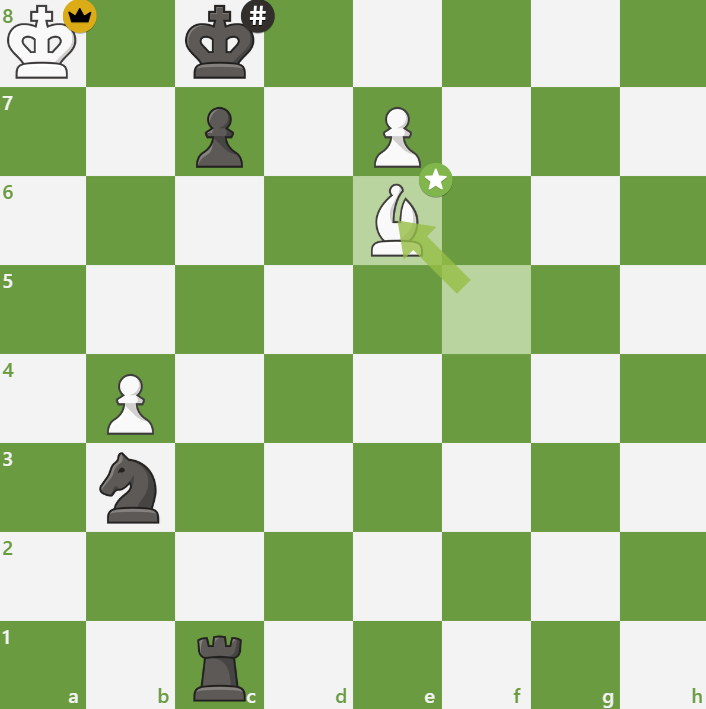
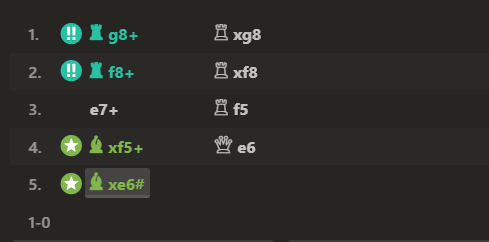
Once Ferdinand triumphed in his game, his spirits lifted, and he promptly agreed to Columbus’ proposal. Queen Isabella immediately informed Columbus of the positive outcome, setting in motion the events that eventually led to the discovery of the New World.
The solution to Ferdinand’s chess game was clear once the idea was revealed, with every move being forced. Thanks to this victory, history was forever changed.
NAPOLEON BONAPARTE: THE FINAL DOWNFALL OF FRANCE
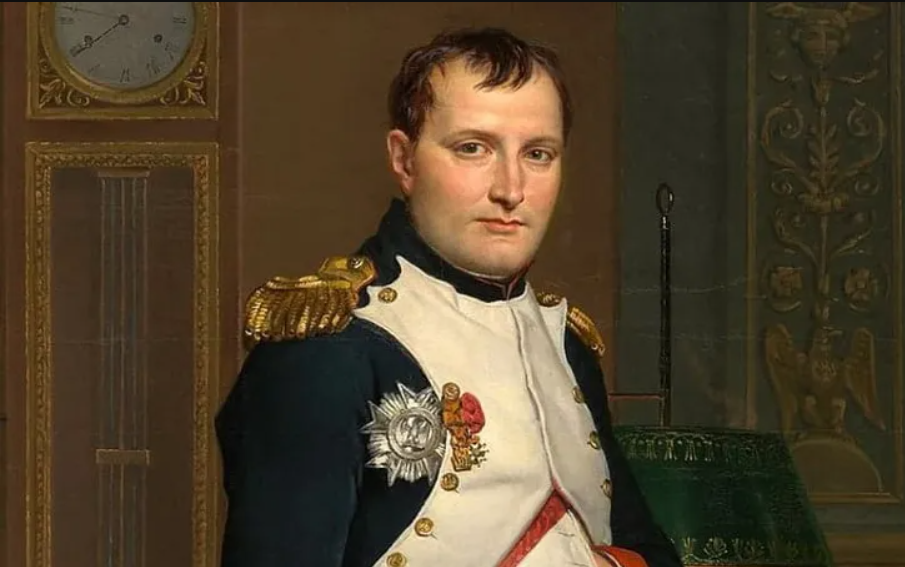
Napoleon Bonaparte, also known as Napoleon I, stands as one of France’s most iconic historical figures. Born on August 15, 1769, and passing on May 5, 1821, he was a political leader who rose to power during the French Revolution. From 1799 to 1804, Napoleon led the French Republic, before declaring himself Emperor of the French Empire, expanding his influence until his eventual defeat in 1814.
After initially supporting the French Revolution in 1789, Napoleon commanded numerous victorious military campaigns across Europe between 1796 and 1814, in what are now called the Napoleonic Wars. His significant victories, including the famed Battle of Austerlitz, led to the dismantling of the Holy Roman Empire, making him a national hero.
However, in 1812, his ill-fated invasion of Russia resulted in a disastrous retreat during the harsh winter. Following this, Prussia and Austria joined forces with Russia, decisively defeating Napoleon at the Battle of Leipzig. Paris was captured, and Napoleon was forced to abdicate in April 1814. Exiled to the Mediterranean island of Elba, Napoleon managed to escape and return to power in February 1815 in a period known as the “Hundred Days.” His renewed reign was short-lived, as his enemies formed the Seventh Coalition, which defeated him at the Battle of Waterloo in June 1815. He was then exiled to the distant island of Saint Helena in the South Atlantic, where he lived out the remainder of his days, passing away in 1821.
Napoleon’s Connection to Chess
Napoleon was an enthusiastic chess player, though there is ongoing debate about the authenticity of some of his recorded games. Despite these controversies, many of his games have been preserved in chess books and databases. While in exile on St. Helena, he frequently played chess with General Bertrand.
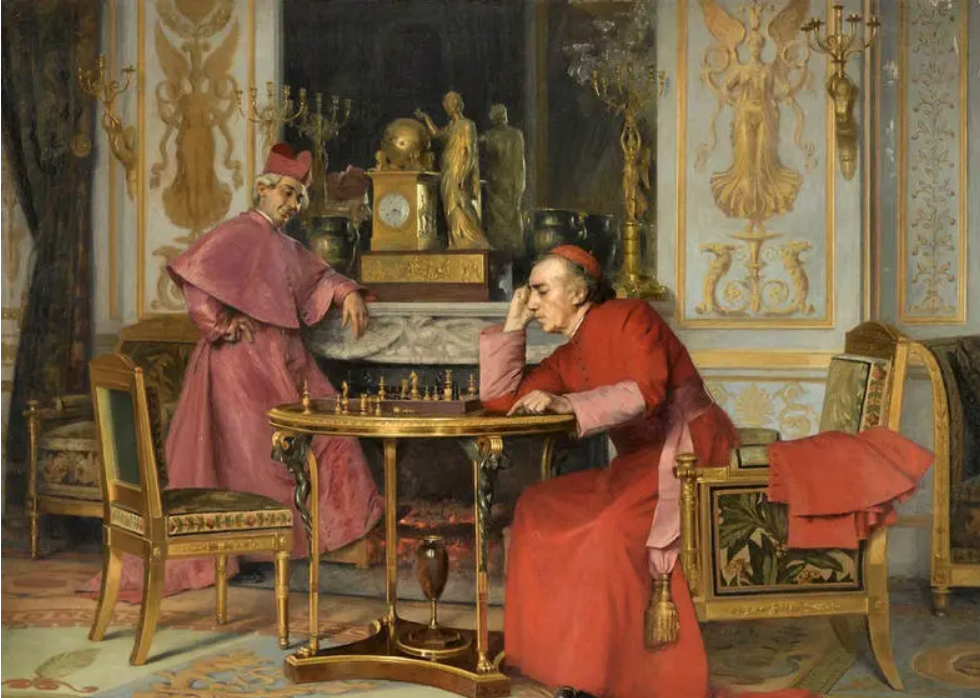
One of the most curious stories involving Napoleon and chess is his encounter with the famous “Mechanical Turk” during a visit to Vienna in 1809. According to accounts, Napoleon deliberately made illegal moves during their match. In response, the machine waved its arm and knocked the chess pieces off the board, much to his amusement. Afterward, he played a proper game, eventually resigning after nineteen moves.
Here’s a famous game Napoleon played in 1804 against Claire, Comtesse de Rémusat:
The position becomes dangerous as the king is overly exposed. Sacrificing yet another piece leads to a forced checkmate.
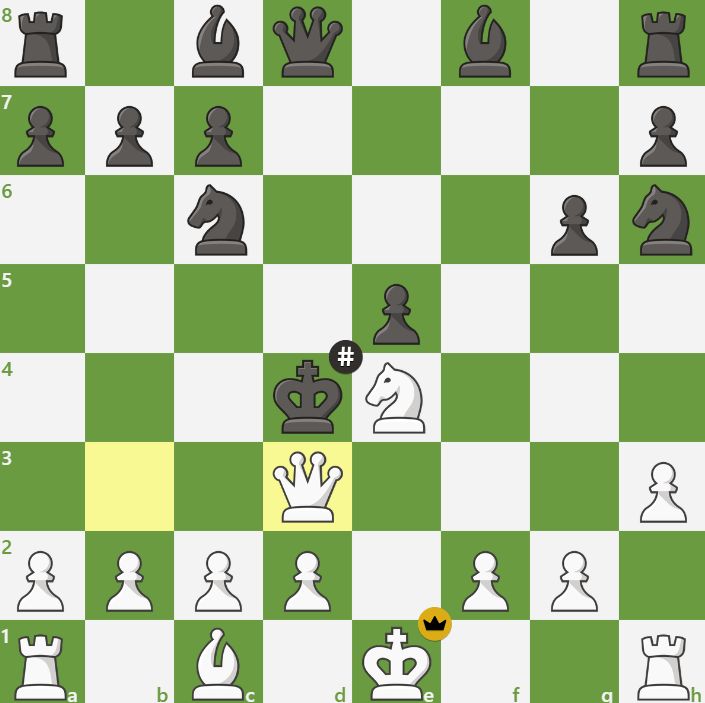
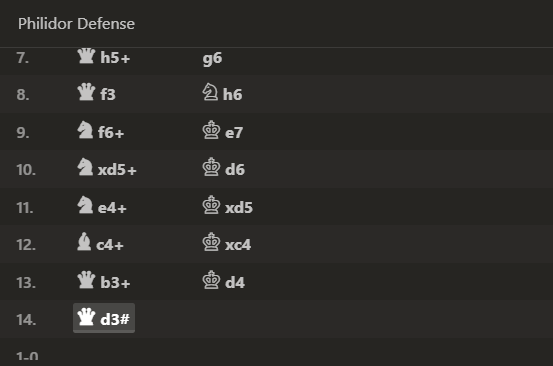
A Hidden Secret on St. Helena
Now, for the twist in history. Legend has it that during his exile on St. Helena, Napoleon’s supporters secretly sent him a chess set made of ivory pieces. Hidden within this set was a meticulously detailed escape plan. As his love for chess was well known, the plan would not raise suspicion. Unfortunately, despite playing many games with the set, Napoleon never uncovered the hidden secret, as the officer entrusted with delivering the set and revealing its contents died en route to St. Helena. Thus, an opportunity for freedom slipped through his fingers.
ALAN TURING: A GENIUS WHO PAVED THE WAY FOR SAVING SPECIES
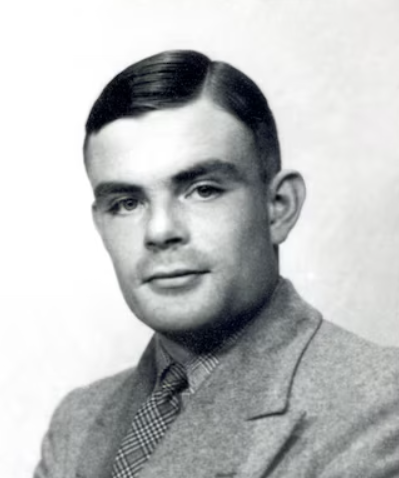
Alan Turing, often hailed as the father of computer science, made monumental contributions that shaped the modern world. Born on June 23, 1912, and passing on June 7, 1954, this English mathematician and logician is regarded as one of the brightest minds of the 20th century. He revolutionized the field of computation and algorithms with his invention of the Turing machine, a foundational model for today’s computers.
But how does chess connect to Turing’s legacy? Turing saw chess as an excellent platform for pioneering research in artificial intelligence (AI). In fact, he created Turochamp, the world’s first chess program, in 1948. Though it wasn’t completed due to technological limitations, Turochamp marked a critical step forward in the early stages of AI research. Designed as more than just a chess-playing algorithm, it represented a broader investigation into machine learning and computation. Despite its low skill level in gameplay, it could play full games against human opponents.
In a notable match, Turochamp faced Alick Glennie on March 15, 1952, in Manchester. After a chaotic and error-filled game, Glennie seized an opportunity when Turochamp left its queen vulnerable and ultimately won. Although Turochamp wasn’t a great player, it laid the groundwork for many advancements in AI.
While it’s an exaggeration to say that without Turochamp there would be no AI, its influence was undeniable. Turing’s work continues to shape modern AI, even in unexpected ways.
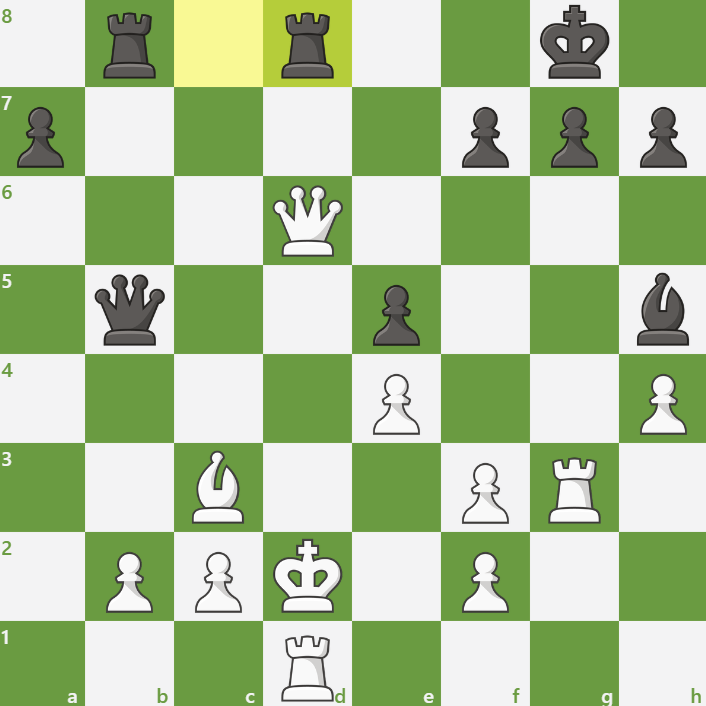
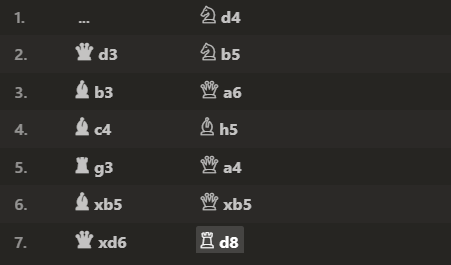
For instance, in 2020, Air New Zealand launched a project that utilized AI to optimize aircraft turnaround times—the interval from when an airplane arrives at the gate until it departs again. I was fortunate enough to contribute to this project, which was partly built upon the principles that Turing had applied in creating Turochamp. While I can’t delve into the technical specifics, I can confirm that this innovation has significantly reduced delays at Auckland Airport.
This reduction in delays has had broader implications. Tourism is vital to New Zealand’s economy, and the income generated helps fund conservation efforts to protect endangered species, such as the Kākāpō, a flightless parrot native to the country. Thanks to advancements in AI inspired by Turing, even these adorable creatures benefit from the seamless operations of the tourism industry.
Charlemagne: A Blunder Decides the Fate of Europe
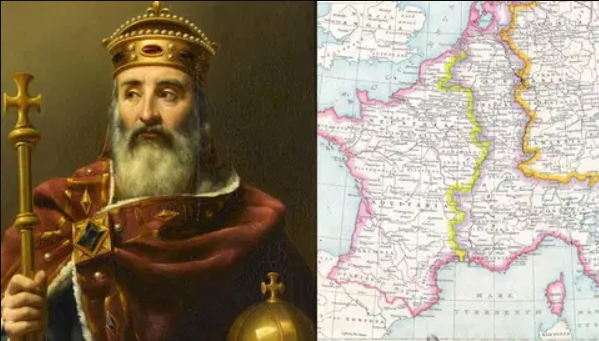
Charlemagne, the illustrious ruler of the Carolingian Empire, was born on April 2, 748, and reigned as emperor from 800 until his death on January 28, 814. He unified much of Western and Central Europe, becoming the first emperor in the West since the fall of the Roman Empire over 300 years earlier.
His reign brought significant political and social reforms. Charlemagne’s influence reshaped Europe through advancements in administration, law, education, military organization, and religion, setting the foundation for the Middle Ages. His leadership also enabled the cultural revival known as the Carolingian Renaissance. However, his new imperial status also put him at odds with the Byzantine Empire.
A legendary tale surrounds Charlemagne and a set of chess pieces said to be a gift from Caliph Harun al-Rashid. These pieces featured elephants instead of bishops and chariots in place of rooks, suggesting they may have played Shatranj, an early form of chess. While this story is unverified, it hints that chess might have been introduced to Europe earlier than previously thought.
The chess pieces known as the “Charlemagne chessmen” date back to the 11th century, but the story I want to share is a different, likely fictional, yet captivating anecdote.

It involves a courageous soldier named Garin, who served Charlemagne with distinction, earning admiration from fellow knights and the affection of many women, including the Empress herself. Garin, loyal to his emperor, rejected her advances. The remorseful Empress confessed to Charlemagne, who then proposed a chess match with a perilous wager: “If you win, I will give you my entire kingdom and my wife. If I win, you will forfeit your life.”
Garin, unable to refuse, accepted the challenge. What Charlemagne didn’t know was that Garin was a chess prodigy. With a brilliant queen sacrifice akin to the famous Légal trap, Garin outmaneuvered the emperor and delivered a checkmate.
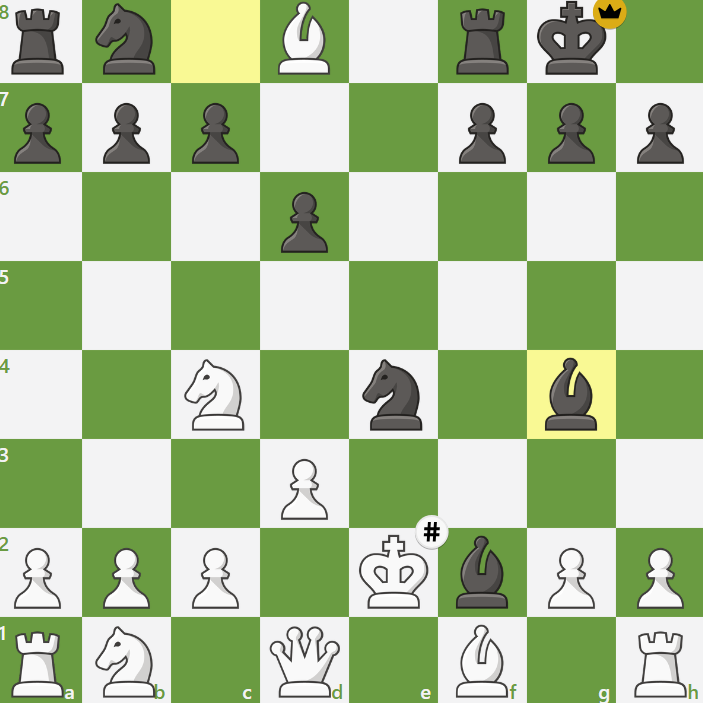
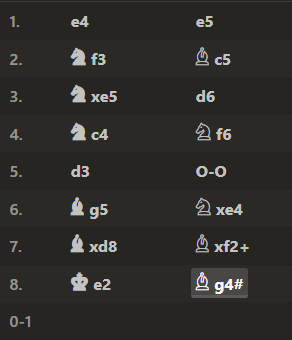
Dejected by his loss, Charlemagne said, “Garin, take what I have promised.” But Garin, ever loyal, declined the reward, allowing Charlemagne to continue his reign.Thus, in this tale, a game of chess nearly altered the fate of Europe.
Benjamin Franklin: An Interrupted Revolution

Benjamin Franklin, one of the Founding Fathers of the United States, was born on January 17, 1706, and passed away on April 17, 1790. Renowned as an American writer, scientist, inventor, statesman, diplomat, printer, publisher, and political philosopher (quite the résumé), Franklin was one of the most influential minds of his era. He helped draft and signed the Declaration of Independence in 1776, cementing his legacy as a key figure in American history.
Franklin was also the first known chess player in the American colonies and was posthumously inducted into the U.S. Chess Hall of Fame in 1999. He often used chess as a cover for secret meetings aimed at securing allies for the American Revolution. Thanks to his efforts, France entered the war, which ultimately helped the colonies win their independence from Britain.
In December 1774, Franklin traveled to England as a diplomat, using the opportunity to engage with strong chess players. One of his challengers was Lady Caroline Howe, and as noted by historian Prof. George Allen, she defeated Franklin rather easily—partly because he wasn’t particularly skilled at the game. Did this loss frustrate him? It’s worth pondering.
“[…] he found his match in this English woman, who beat him soundly and easily. So, Franklin should be remembered more for his passion for chess than for his skill.”

Lady Howe, who checkmated Franklin, also introduced him to her brother, Rear-Admiral Lord Richard Howe, the British navy’s commander in North America. Determined to avoid conflict, Lord Howe arranged secret meetings disguised as chess games between Franklin and his sister from late 1774 until March 1775, hoping to negotiate peace. However, no significant progress was made.
A year later, in 1776, after the Continental Congress declared independence, Lord Howe made one last attempt at peace. He bypassed the Congress, addressing a letter directly to Franklin, calling him “my worthy friend” and referencing their chess games. Howe expressed hope that he could help bring about lasting peace.
Franklin, however, replied angrily on July 30, just three days before the signing of the Declaration of Independence, firmly rejecting the offer: “It is impossible that we should think of submission to a government whose atrocious injuries have extinguished every remaining spark of affection for that parent country we once held so dear.”
Conclusion (And a Chess Example)

I hope you enjoyed reading this piece. The primary aim wasn’t to explore the absurd futuristic scenarios mentioned earlier—most of which are likely just legends or exaggerated for fun. Instead, the goal was to use a familiar concept to engage readers and offer a chance to learn something new. It’s fascinating to think that some of history’s most influential figures, who shaped the world, also enjoyed a game of chess when they weren’t busy making history. A big thanks to my friend @Victor_Stepko_4 for his help.
The “Butterfly Effect” applies to chess as well. In the 1892 World Championship, Mikhail Chigorin found himself in a winning position against Wilhelm Steinitz. A victory would have leveled the match and given him a psychological edge for the title! However, one fateful moment may have altered the course of chess history. With the blunder 32. Bb4 (??), Chigorin handed his opponent a mate in two, marking one of the worst blunders in chess history.
What if the outcome had been different? Could Chigorin have become world champion? Would Emanuel Lasker have beaten him in 1894? And would Chigorin’s playing style have influenced the future of chess? We will never know.
Mikhail Chigorin vs. Wilhelm Steinitz
0-1
1892 World Championship Match
Havana, Cuba, February 28, 1892, Round 23
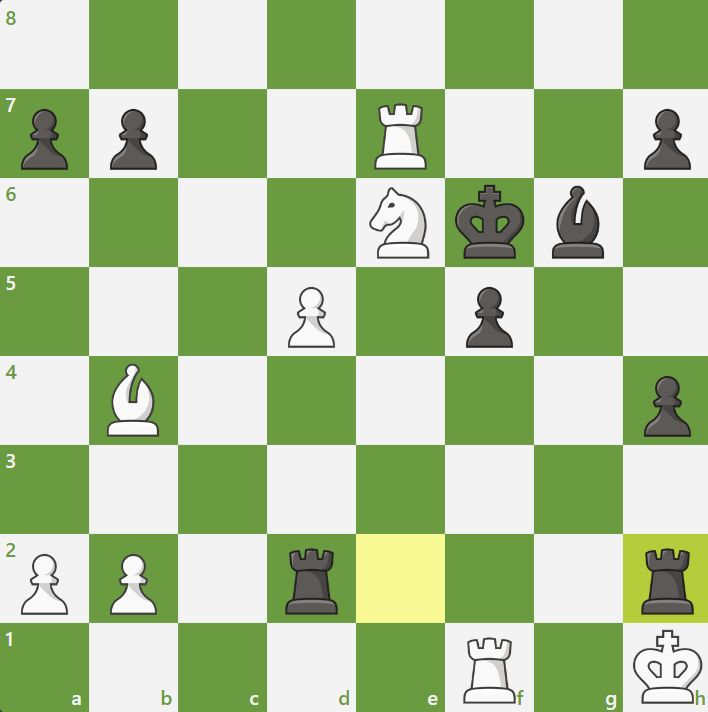
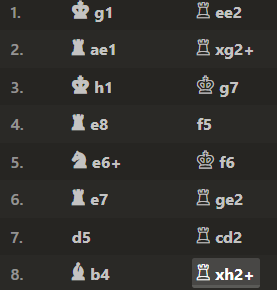
At that critical moment, modern analysis suggests White had an advantage of about +3.0. But with the fatal move, Chigorin drastically shifted the game, allowing Steinitz to checkmate in two moves and retain his title. Seizing the opportunity, Steinitz clinched victory, and Chigorin resigned.
To wrap up this article, I want to remind you that the “Butterfly Effect” isn’t just about major historical events; it’s also present in our daily lives. A seemingly small decision you made years ago may have drastically changed your path, leading to a completely different outcome than if you had made another choice.
Think about it—if you hadn’t decided to go to a certain place, you might never have met the love of your life. If you chose a different major in college, you could have ended up with different jobs, friends, homes, and even a different personality. Ultimately, we are the result of our choices, and sometimes the smallest decisions are the ones that define who we become.
Note: This text is for entertainment purposes only. Feel free to join in and share your own thoughts on what might have happened. Just remember, this is a chess blog—not an academic article—so kindly avoid treating my predictions like scientific theories. Enjoy!
Diving Chess: The Next Big Thing in Hybrid Sports
Aug 28th, 2024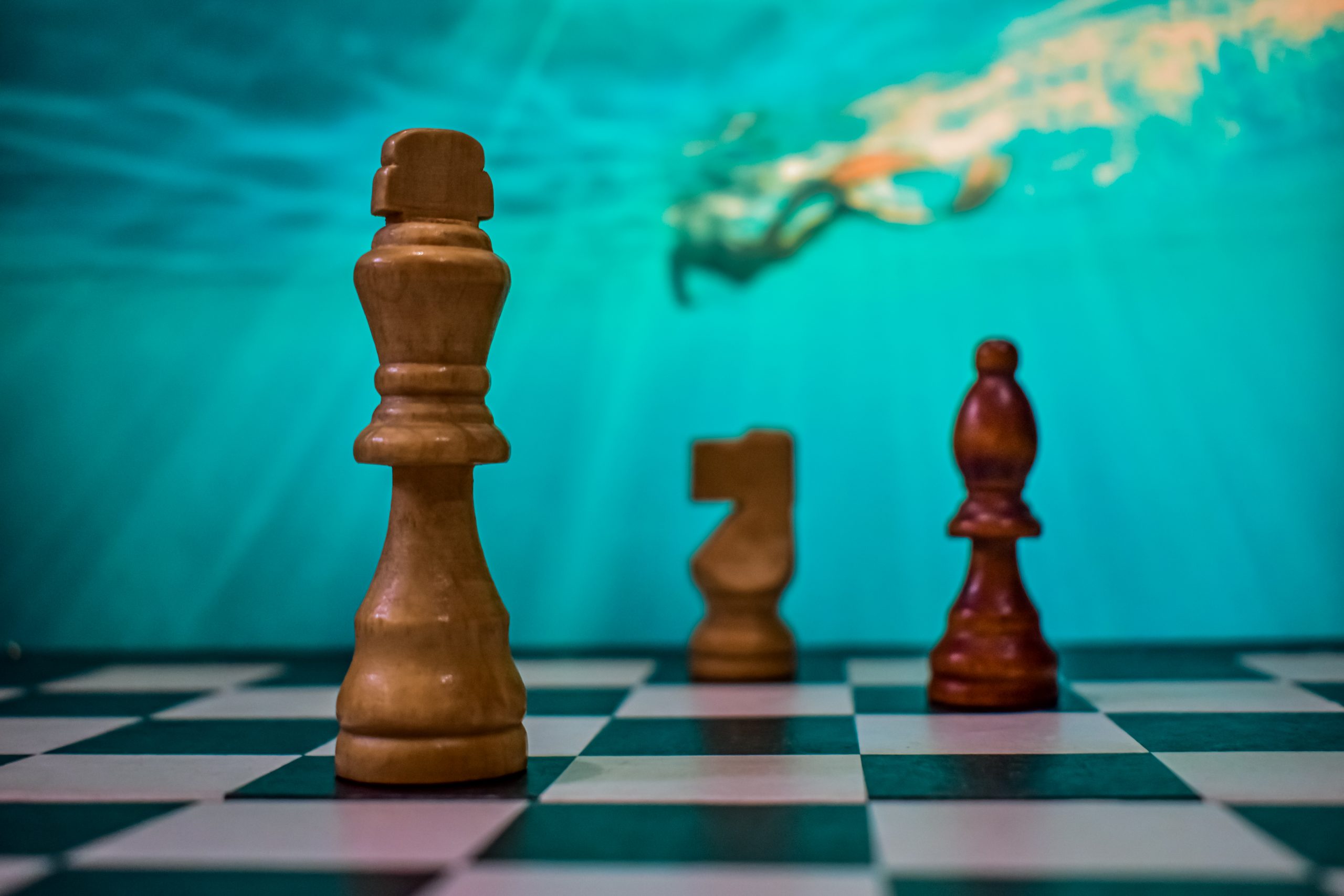
INTRODUCTION
Chess is a demanding game that challenges your mind, requiring a sharp intellect, endurance, and the ability to think strategically over long periods. It’s a tough yet exhilarating challenge to engage in.
Recently, a new trend has emerged: chess hybrid sports. These intriguing combinations of chess with physically demanding sports create entirely new, challenging, and entertaining games. These hybrids add an extra layer of difficulty to the already complex game of chess.
The most well-known chess hybrid is chessboxing, a sport where participants alternate between rounds of chess and boxing. While chessboxing has been around for a while, it has recently gained significant attention.
However, chessboxing is just the tip of the iceberg when it comes to chess hybrids played at a professional level. In this blog, I introduce you to diving chess, an innovative sport where chess is played underwater.
HOW IT BEGAN
Since 1997, the Mind Sports Olympiad (MSO) has been held annually in England. This event brings together some of the world’s best players in various mind sports, allowing them to compete head-to-head. The MSO features games like poker, Scrabble, speedcubing, and of course, chess. It’s essentially the Olympics for mental sports.
Among the many competitors over the years is Etan Ilfeld, a man of diverse talents. Not only is he a successful entrepreneur, but he’s also a master of numerous mental sports. Etan is a USCF National Master in chess, winner of the 2010 Amateur Poker World Championship at the MSO, and more recently, a participant in the 2023 Backgammon World Championships. His impressive achievements in the world of mind sports led to his role as the chief organizer of the MSO and a leader within the Mind Sports Organisation (UK).

In 2012, Etan came up with a bright idea and, true to his entrepreneurial spirit, quickly turned it into reality.
His idea was diving chess, a sport that challenges both mental acuity and lung capacity. Inspired by chessboxing, Etan loved the concept of merging physical activity with chess but felt that chessboxing focused too much on the physical aspect. He envisioned a sport where chess remained the core, but the added physical challenge would make it even more difficult. And so, diving chess was born.
In 2013, diving chess was introduced as part of the Mind Sports Olympiad lineup. Since then, the Diving Chess World Championship has been held annually (with the exception of the COVID-19 years) and remains a staple of the MSO.
HOW IT WORKS
Diving chess matches take place in a swimming pool between two players. They alternate diving underwater to assess the chessboard and make their move. Once a move is made, the player resurfaces, and their opponent immediately dives down to make their move. Victory is achieved in the same way as a regular chess game—by resignation or checkmate.
The physical challenge lies in staying underwater while holding your breath until a move is made, all while coping with the often chilly pool temperatures. Players have little time to catch their breath, as their opponent quickly dives in to make their move right after.
If a player surfaces without making a move, they receive a warning. Multiple warnings or a lack of valid excuses for resurfacing early can lead to forfeiture of the game.
The pools used for diving chess are typically 4-5 feet deep. The chessboards and pieces are weighted and magnetic to prevent them from floating. Players are only allowed to wear goggles and a swimsuit—no wetsuits, snorkels, or other aids are permitted.
THE BEST IN THE BUSINESS
Like any sport, diving chess has its star players, and despite being a relatively new sport, it’s no exception. Several major diving chess tournaments are held across Europe each year, featuring some of the world’s top players. Here are a few who have emerged as the best in the field.
Michal Mazurkiewicz

The current Diving Chess World Champion, Michal Mazurkiewicz, successfully defended his title in August 2023 after also winning in 2022. He’s firmly established himself as the dominant force in diving chess.
But Michal’s achievements go beyond his back-to-back world titles. In April of this year, he set a world record by completing a large-scale chess simul underwater, winning over 80% of the games. He played against 16 opponents simultaneously and finished with 12 wins, 3 draws, and 1 loss (the loss being to International Master Piotr Brodowski).
Michal is also a skilled standard chess player, holding the title of Candidate Master with a FIDE rating of 2224. Though not very active in classical chess recently, he made a remarkable comeback by winning the 2024 Salento Open.
Sipke Ernst & Zyon Kollen
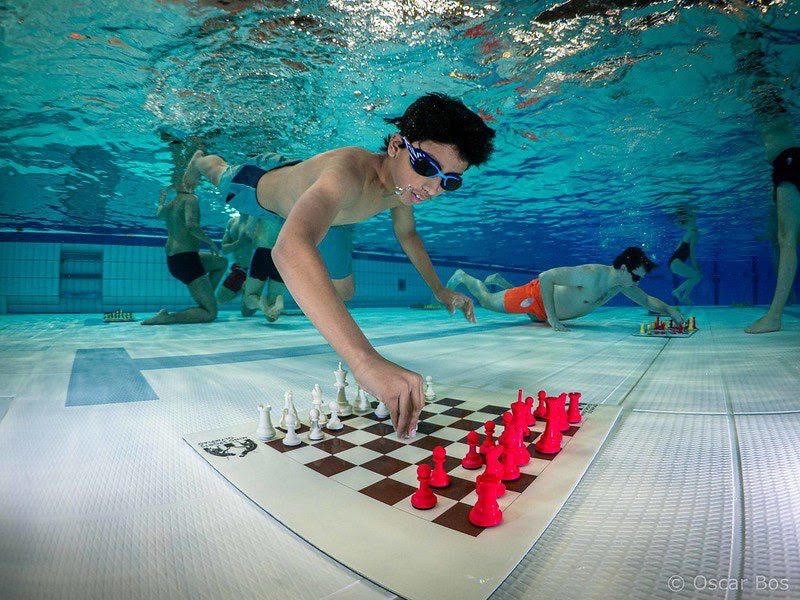
Another prominent event is the Dutch Diving Chess Championship, held annually as part of the Chess Festival Groningen. The inaugural 2022 championship was won by Dutch grandmaster Sipke Ernst, who secured victory by drawing his final game against FIDE Master Zyon Kollen. Sipke is well-known in the chess community, notably as Magnus Carlsen’s opponent in the infamous Immortal Game of 2004.
The 2023 edition of the Dutch Diving Chess Championship featured a thrilling playoff for first place between Ernst and Kollen. This time, Zyon Kollen emerged victorious, claiming the title in a close finish. Their rivalry is one to watch in the future!
Etan Ilfeld
Yes, you read that right—Etan Ilfeld not only invented diving chess but is also a top competitor. He has consistently ranked in the top three at the Diving Chess World Championship, winning silver five times and gold in both 2016 and 2017. It seems there’s nothing Etan isn’t good at!
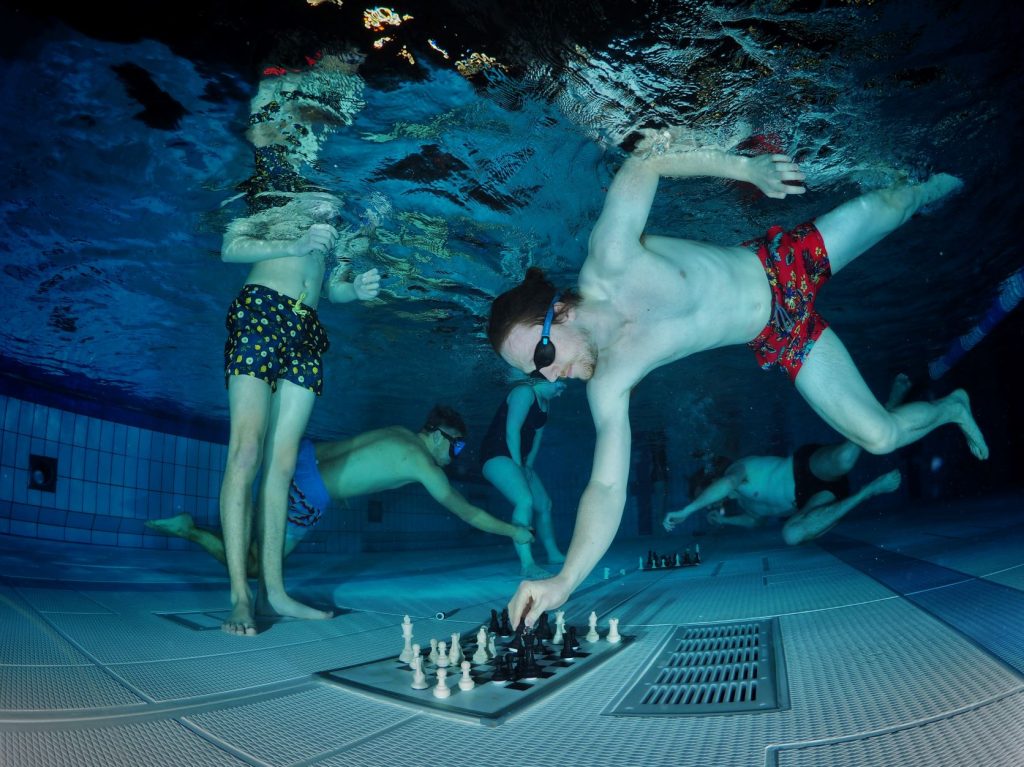
CONCLUSION
Diving chess is a truly unique and fascinating hybrid sport, and I’m thrilled to have had the opportunity to introduce it to you. Writing this blog has been a learning experience, and I hope it’s been the same for you.
If you have any additional information or corrections, I’d love to hear from you in the comments.
That’s all for now—see you next time!
The Evolution of Chess Strategy: From Morphy to Carlsen
Aug 13th, 2024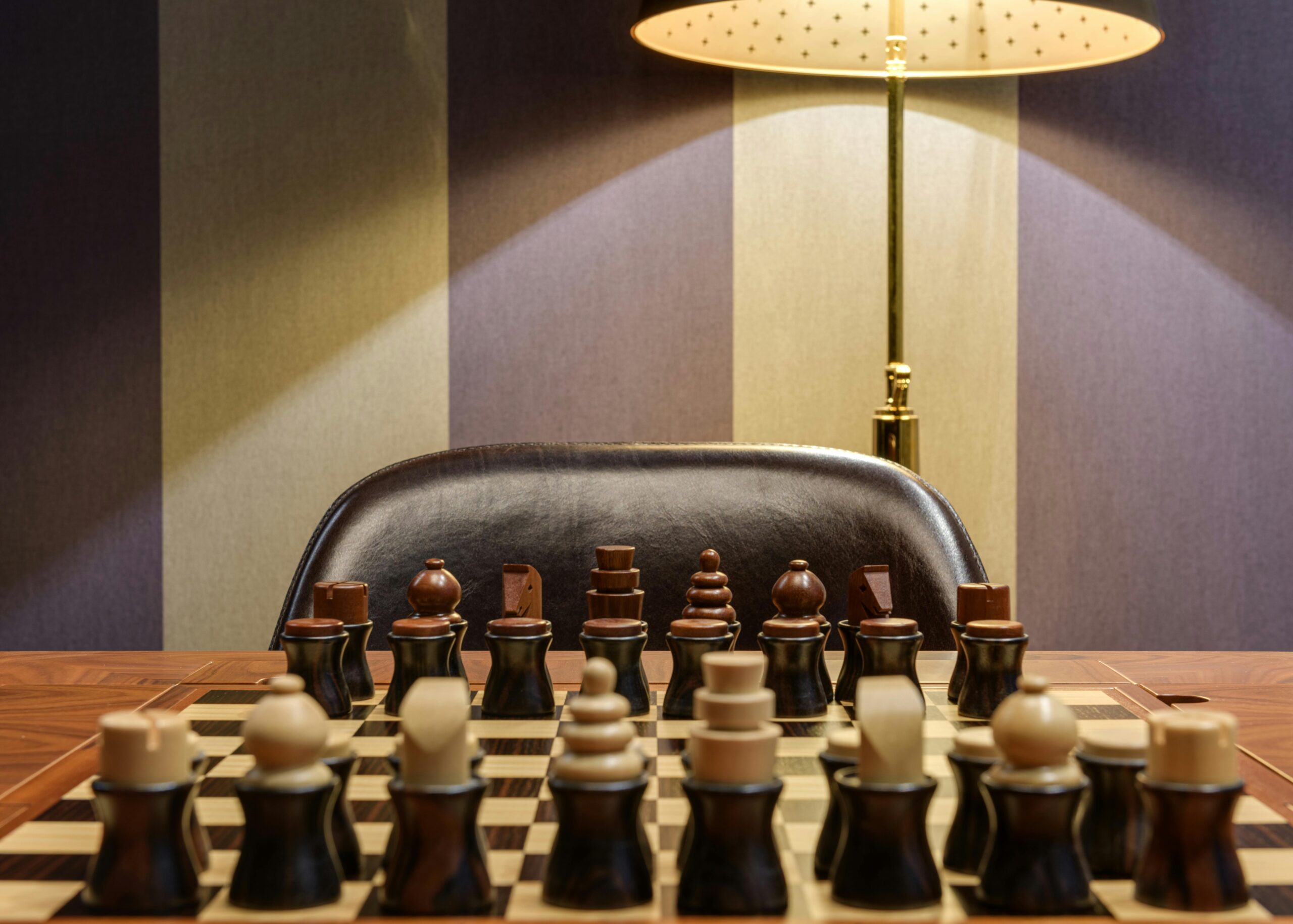
Chess strategies have evolved dramatically over the centuries, with each generation of grandmasters contributing to the development of new ideas and techniques. Here’s a look at how chess strategy has progressed from the era of Paul Morphy to the present day with Magnus Carlsen.
The Romantic Era: Paul Morphy’s Tactical Genius (Mid-19th Century)
Paul Morphy, often considered the greatest chess player of his time, was a leading figure during the Romantic Era of chess. This period emphasized aggressive, open play with daring sacrifices and brilliant combinations. Morphy’s ability to dominate his opponents with tactical brilliance set the stage for future strategic developments.
The Classical Era: Wilhelm Steinitz and Positional Play (Late 19th Century)
Wilhelm Steinitz, the first official World Chess Champion, introduced a more scientific approach to chess, emphasizing positional play. Steinitz’s ideas about building a solid foundation and controlling the center were revolutionary at the time and laid the groundwork for modern chess strategy.
The Hypermodern Revolution: Aron Nimzowitsch and Indirect Control (Early 20th Century)
In the early 20th century, Aron Nimzowitsch and other Hypermodernists challenged classical ideas by advocating for indirect control of the center. The Hypermodern strategy involved controlling the board from a distance, using pieces instead of pawns, and allowing the opponent to occupy the center early on, only to undermine it later.
The Soviet School: Deep Strategic Insight (Mid-20th Century)
The Soviet School of Chess, led by figures like Mikhail Botvinnik, emphasized rigorous preparation and deep strategic understanding. This era was characterized by long-term planning, meticulous endgame play, and the use of psychology as a tool in chess. The Soviet dominance in chess produced a generation of players who would go on to influence the global chess landscape.
The Kasparov Era: Dynamic Play and Technological Integration (1980s to 2000s)
Garry Kasparov, one of the greatest chess players in history, brought a new level of dynamism to the game in the 1980s and 1990s. Kasparov’s aggressive style, combined with his deep understanding of both tactics and strategy, revolutionized chess. He was also one of the first top players to fully integrate computer analysis into his preparation, which significantly impacted the way chess is studied and played today.
The Anand Era: Speed and Versatility (Late 20th Century to Early 21st Century)
Viswanathan Anand emerged as a dominant force in the late 1990s and early 2000s. Known for his rapid calculation and versatility across different formats, Anand’s influence on modern chess is profound. He became a five-time World Chess Champion and inspired a new generation of Indian chess players.
The Modern Era: Magnus Carlsen’s Universal Mastery (21st Century)
Magnus Carlsen, the reigning World Chess Champion, is known for his universal style, which combines elements of all previous eras. Carlsen’s ability to excel in complex positions and his exceptional endgame skills make him one of the most complete players in chess history. His approach to chess is characterized by flexibility, psychological resilience, and a relentless pursuit of victory.
Why Join the Madras School of Chess?
The Madras School of Chess is a top-tier institution offering a rare opportunity to train under some of India’s most distinguished chess experts. Among them is Grandmaster Vishnu Prasanna, a co-founder and the former coach of prodigy Gukesh D, one of the world’s youngest grandmasters. The academy is also associated with Grandmaster Akash Ganesan, a trailblazer who made history as the youngest national chess champion of India at the age of 16. The success stories of these players underscore the exceptional quality of coaching and mentorship provided by the Madras School of Chess.
For beginners, the Madras School of Chess provides a strong foundation in the basics of chess, from understanding opening principles to mastering endgame techniques. As students progress, they are introduced to advanced concepts and strategies, preparing them for competitive play. With personalized coaching, access to extensive resources, and regular tournaments, the school ensures comprehensive development for every student. Joining the Madras School of Chess not only offers world-class training but also connects students with a rich legacy of chess excellence.
Chessgrad, Creative Minds, and GMVCC: The Powerful Trio Behind Madras School of Chess
Jul 29th, 2024
The Madras School of Chess, renowned as the best chess academy in Chennai, emerged from the union of three elite chess academies: Chessgrad, Creative Minds, and GMVCC. This merger combines their unique strengths, providing a superior learning environment for chess enthusiasts. Let’s explore the journey and the powerful trio that formed this exceptional institution.
The Trio’s Journey
Chessgrad: Building Chess Champions
Chessgrad has been a cornerstone of chess education, focusing on foundational skills and competitive excellence. Known for producing top-tier players, its methodologies have now become a part of the Madras School of Chess, ensuring students receive rigorous and comprehensive training.
Creative Minds: Fostering Innovative Thinking
Creative Minds brought a creative approach to chess, emphasizing strategic innovation and unique playing styles. This academy’s emphasis on thinking outside the box complements the traditional methods of Chessgrad and GMVCC, enriching the overall curriculum.
GMVCC: Championing Competitive Play
GMVCC’s legacy of success in national and international tournaments adds a competitive edge to the Madras School of Chess. Its rigorous training programs are designed to prepare students for high-level competition, making it an integral part of this powerful trio.
Why Choose Madras School of Chess?
Choosing the right chess academy is crucial for anyone serious about mastering the game. The Madras School of Chess, formed by the merger of Chessgrad, Creative Minds, and GMVCC, offers a unique blend of expertise and innovative training methods. Here’s why the Madras School of Chess stands out as the top choice for chess enthusiasts:
Expert Coaches with Proven Track Records
At the Madras School of Chess, students have the rare opportunity to learn from some of the best minds in the chess world. Our coaching team includes:
- Grandmaster Vishnu Prasanna: India’s 33rd Grandmaster, known for his deep strategic understanding and numerous national accolades.
- Grandmaster Akash Ganesan: The youngest National Chess Champion of India, bringing modern and innovative techniques to the table.
- Women International Master Priya Panneer: A seasoned competitor with a history of representing India on global stages.
- Women International Master Raghavi Vishnu Prasanna: A five-time national champion and Commonwealth silver medallist.
Comprehensive and Structured Curriculum
Our curriculum is designed to cater to all skill levels, from beginners to advanced players. Each course is meticulously crafted to ensure steady progress:
- Beginner (Pawn Batch): A two-month program focusing on the basics and fundamental principles of chess.
- Intermediate (Knight & Bishop): A six-month program that builds on foundational skills and introduces more complex strategies.
- Advanced (Rook & Queen): A six-month program aimed at honing advanced techniques and tactical play.
- Advanced+ (King): The pinnacle of our training programs, designed for players looking to compete at the highest levels.
State-of-the-Art Training Facilities
Both our Anna Nagar and T. Nagar branches are equipped with modern amenities to provide a comfortable and conducive learning environment. Our facilities include:
- Spacious and well-lit classrooms
- Advanced digital boards and analysis tools
- A library of chess literature and resources
- Regular practice sessions and mock tournaments
Personalized Attention and Mentorship
We believe in the power of personalized coaching. Our trainers provide individual attention to each student, ensuring that their unique strengths and weaknesses are addressed. This personalized approach helps students:
- Develop their own playing style
- Overcome specific challenges
- Set and achieve personal chess goals
- Gain confidence through tailored feedback and support
Join Us Today
The Madras School of Chess is more than just an academy; it’s a community of passionate chess players and learners. Whether you’re a novice eager to learn or an advanced player aiming to compete internationally, we have the right program for you. Enroll now at our Anna Nagar or T. Nagar branches and embark on your journey to chess mastery with the best chess academy in Chennai.
Contact Us
For more information and to book a demo class, visit our website or contact us at +𝟗𝟏 𝟗𝟖𝟒𝟎𝟒𝟎𝟑𝟑𝟕𝟔 or 𝐜𝐨𝐧𝐭𝐚𝐜𝐭@𝐦𝐚𝐝𝐫𝐚𝐬𝐬𝐜𝐡𝐨𝐨𝐥𝐨𝐟𝐜𝐡𝐞𝐬𝐬.𝐜𝐨𝐦 . Join the Madras School of Chess and become part of a legacy of excellence and success in chess.
© 2024 The Madras School of Chess
Created by Webdzo